

SUPER HUMANS
WHAT WE EAT WILL MAKE US INVINCIBLE
YEAR 4, NO. 12, 2023
STAFF DIRECTORY
EXECUTIVE DIRECTOR DIRECTION FINANCE
COLLABORATORS
GRAPHIC DESIGN
Marco A. Cid
Samuel Gutiérrez Cruz
Carmen de la Rocha
Daniel Goldstein
Julian Mellentin
Nayely Leyva López
José Basilio Heredia
Claudia Mejía Morales
Wendy López Romero
Saúl Flores Unzueta
Blanca E. Ruíz Álvarez
Óscar Mata
Ignacio López-Goñi
Alondra Del Carmen Ruiz G.
Lucrecia S. Carrera Quintanar
Fabiola Márquez-Sandoval
Nydia Y. Sánchez Orozco
GRAPHIC DESIGN
Citlalli M. J. Pérez Novoa
Gary Jheferson Salazar
Ana Villaseñor-Todd
Miguel A. Salas-García
Valeria BuenrostroVelasco
María Fernanda BernalOrozco
Bárbara Vizmanos
Blanca Peredo
ADVERTISE YOUR COMPANY ON CLINICALRESEARCHINSIDER! yesika.munoz @droxhealth.com / (52) 33 16 95 59 95 Clinical Research Insider magazine, year 4, no. 12, active circulation September-October-November 2023, is a trademark of CRPS CLINICAL RESEARCH PROFESSIONAL SERVICES, LLC. All rights reserved. Clinical Research Insider is a bimonthly publication, edited in 12550 Biscayne Blvd., Ste. 110, Miami, FL. 33181 USA. Contact telephone: (+1) 786 269 0937. Responsible Editor: CRPS CLINICAL RESEARCH PROFESSIONAL SERVICES. E-mail: carolina.villanueva@ clirinsider.org. The content of articles and advertising is the responsibility of their authors and sponsors. Clinical Research Insider is not responsible for the information in the advertising content. Prices shown in this publication are for informational purposes only and are subject to change. ADMINISTRATIVE ASSISTANT COMMUNITY MANAGER Francisco
Marco Cid Fabian Valdes Calleja Carolina Villanueva Ivette Venegas Karen Espinoza Victoria Arnauda Yesika S. Muñoz
Pavel Moreno Cesar Perez EDITORIAL
GENERAL DIRECTOR MARKETING DIRECTOR EDITOR IN CHIEF
Alex Zhavoronkov COMMERCIAL TRANSLATOR GRAPHIC DESIGN (ARTEMIS)
Rick Ruiz-Dana
Hernandez
Vanessa Velazquez
The value of knowing your gut microbiota
Blanca Elizabeth Ruiz Albarez, M. Sc.
Do probiotics work?
Dr. Ignacio Lopez Goñi
What is the impact of diet on periodontal disease?
Alondra Del Carmen Ruiz et al.
Aspartame: its classification as a possible carcinogen and its impact on the industry
Gary Jheferson Salazar Rondon, M Sc.
Monosodium glutamate - flavor enhancer or disease enhancer?
Miguel A. Salas-García et al.
DIRECTOR’S OPINION
Marco Cid, MBA
Is diet evidence-based medicine?
Carmen de la Rocha, PhD
The Challenge of Modern Sterilization Centers
Ing. Samuel Gutierrez Cruz
Who Takes the Blame for Obesity?
Dr. Daniel Goldstein
Lab-cultured meat puts us on the road to a new dietary underclass
Julian Mellentin
Functional foods against diabetes
Dra. Nayely Leyva-Lopez & Dr. Jose Basilio Heredia
Food and drug interactions. Statins and grapefruit juice
Claudia Mejia Morales, PhD
Salad as an antidepressant
Wendy Lopez Romero, PhD
Nutrition in Clinical Research
Saul Flores Unzueta, PhD
Reasons Why Collaboration With China Will Help Billions Of People Worldwide
Alex Zhavoronkov, PhD
Why do some launches fail in the pharmaceutical industry?
Dr. Oscar Mata
Liver cirrhosis and minimal hepatic encephalopathy
Dra. Ana Villaseñor-Todd
Nutritional legacy; Thomas Colin Campbell
OPINIÓN DE LOS EXPERTOS OUR CONTENT 06 14 20 55 67 66 Pag. Pag. Pag. Pag. Pag. Pag. LATEST NEWS ASK THE MOUSECID BUSINESS & DEVELOPMENT GADGETS PEOPLE IN SCIENCE EDITION ENQUIRY The Future of Food in Humans Marco Cid 09 Pag. THE EXPERT’S OPINION 05 16 24 60 69 EDITORIAL CENTRAL RESEARCH CLINICAL COSMOS SCIENCE TODAY CARTOON INSIDER Pag. Pag. Pag. Pag. Pag.
balance Carolina Villanueva
Wisdom in
INSIDER’S CROSSWORD Pag. Carmen de la Rocha,
Rick Ruiz-Dana 70
PhD
Eng. Blanca M. Peredo
Pag. 10 Pag. 38 Pag. 46 Pag. 51 Pag. 57 Pag. 64 Pag. 24 Pag. 42 Pag. 60 Pag. 67 Pag. 11 Pag. 5 Pag. 9 Pag. 12 Pag. 13 Pag. 16 Pag. 22 Pag. 32 Pag. 34
Vázquez
11 Pag.
OUR CONTENT 4
Wisdom in balance
It is just like roads across the earth. For actually the earth had no roads, to begin with, but when many men pass one way, a road is made
Seen on a large scale, scientific inquiry is a very recent undertaking if human history is considered as a reference. Even more recently, formal studies of sciences have been undertaken, such as nutrition and epigenetics, such studies are constantly updated. These areas of study help us better understand how diet and environmental factors can influence our health and well-being. Eating a healthy diet and achieving the balance of all the parts comprising human life goes beyond the intake of appropriate food for our body, as it involves consciously applying a series of complex actions and multiple knowledge for each specific condition.
We know that taking medicine but refusing a healthy diet is tantamount to wasting the wisdom of researchers and the skills of doctors to cure any medical condition because all our parts are interconnected. That is why we dedicate this issue of Clinical Research Insider to give voice to experts from different perspectives and areas of expertise related to nutrition, the food industry, and clinical research.
In favor of integral education, we share the latest advances applicable to spinal health, that which accompanies the human being. In the world of clinical research and all emerging businesses, the trend is toward the creation of holistic ecosystems, so it is essential to emphasize the study of food and its relationship with the pharmaceutical industry.
Although there is still much to discover, these fields promise to open new doors in the way nutrition and health are approached in the future.

5 EDITORIAL NO. 12
«…
»
-Lu Shin
Mexico: food and beverages with trans fats to be banned as of September 2023
Due to an amendment to Mexico’s General Health Law, approved at the beginning of the year and published in the Official Gazette of the Federation, as of the second week of September 2023, the production for sale to the public of oils, edible fats, foods and non-alcoholic beverages containing partially hydrogenated oils, better known as trans fats, which have been added during the industrial manufacturing process, will be penalized.
Article 216 bis of the General Health Law regarding the regulation of trans fatty acids or trans fats indicates that such products must not contain more than 2% of their total fatty acid content.
Source: Official Journal of the Federation
Chronic stress potentiates the development of obesity
A recent study conducted by scientists at the University of New Wales, Australia, revealed that chronic stress triggers the brain’s desire for comfort food, i.e., food rich in calories, which can increase the development of obesity by generating an unhealthy vicious cycle.
According to findings published in the journal Neuron, stress overrides the brain’s natural response to satiety, which generates continuous reward signals that promote the consumption of sweet and higher-calorie foods. This phenomenon develops in a part of the brain called the lateral habenula. Professor Herzog, lead author of the study, mentioned that a healthy diet in times of stress is essential for optimal brain function.
Source: Neuron
Anti-obesity drug shows strong protection against heart disease
The pharmaceutical company Novo Nordisk announced that Wegovy, the trade name for the drug semaglutide, which was originally created to treat obesity, demonstrated a 20% reduction in the risk of serious cardiovascular events.
In a clinical study called SELECT, more than 17,600 adults received injections of the drug and placebo and were monitored for five years. Those who received the drug reflected a lower risk of heart attack, stroke and death from cardiovascular disease. The full results of the trial are expected to be presented at a conference in late 2023 in order to expand the approved use of Wegovy in the U.S. and the European Union. Until now, there was no drug approved for weight control that also reduced the risk of such heart conditions.
Source: Novo Nordisk
6 LATEST NEWS
Alert: relationship between weight loss drugs and suicidal thoughts
The safety committee of the European Medicines Agency (EMA) has issued an alert and initiated a systematic review of socalled Hollywood drugs after three patients from Iceland reported suicidal thoughts and self-harm after taking drugs known as GLP-1 receptor agonists, used for weight loss and to treat type 2 diabetes, including Ozempic (semaglutide), Saxenda (liraglutide) and Wegovy (semaglutide).
The EMA mentioned that it is not yet clear whether the reported cases are related to the medicines themselves or to the patients’ underlying conditions or other factors, however, they are currently investigating whether such cases represent possible side effects, as they do not appear in the information of any of the products indicated.
Source: European Medicines Agency’s (EMA)
Vegetarians have higher risk of hip fracture than carnivores
According to a study conducted by the University of Leeds in the United Kingdom, people who base their diet on vegetarian foods are more likely to suffer hip fractures than conventional meat eaters.
Such results published in the journal BMC Medicine revealed that those who follow a vegetarian diet face a 50% higher chance of suffering a hip fracture compared to those who eat meat regularly. On average, 6.5 regular meat eaters and 6.5 occasional meat eaters experienced a hip fracture, while there would be 7 cases among pescetarians and 9.5 among vegetarians. The low BMI of vegetarians would be an explanation for the higher risk of their fractures.
Source: BMC Medicine
Experimental genetic treatment reduces alcohol addiction by 90%
With a technique used for the treatment of Parkinson’s disease and some types of cancer, U.S. scientists conducted a study in primates based on gene therapy where they discovered that it is possible to reduce alcohol addiction to the point of almost disappearing.
The procedure consisted of balancing the production of dopamine. According to the researchers, in the four animals that received the GDNF growth factor through gene therapy, their consumption was reduced by 90%, compared to the control group; for months, they chose only water and avoided alcohol.
These preclinical findings suggest that gene therapy could be a novel approach to treating compulsive cocaine abuse.
Source: Nature Medicine
7 LATEST NEWS
The
most important project in the history of the simulation of the human brain fails
After a decade of research, more than 500 scientists involved, and funding of 600 million euros from the European Union, the so-called Human Brain Project will come to an end in September 2023 without achieving the expected results.
Human Brain Project (HBP) is one of the most important efforts ever undertaken in history that aimed to recreate the human brain in a computer, and thereby obtain a complete or original understanding of that organ.
However, although the total recreation of the brain was not possible, the scientists involved published thousands of papers, as well as the creation of 3D maps of more than 200 parts of the brain, the development of brain implants to treat blindness, among other advances in neuroscience.
Source: Nature
Scientists develop mind readers that allow people with paralysis to speak fluently using their thoughts
Teams of researchers have enabled people with cerebral palsy and amyotrophic lateral sclerosis to communicate verbally with unprecedented fluency and accuracy.
The advances were made thanks to reading implants developed through Artificial Intelligence (AI), by creating brain-computer interfaces (BCI) that translate neural signals into text or words pronounced by a synthesized voice that sounds like the voice of the patients, they also designed an animated avatar that mimics facial expressions and recreates a natural conversation from thoughts.
Although they claim that these devices could be clinical consumer devices shortly, the researchers still need to implement improvements, such as making the connection of these devices wireless, as well as testing on more people to demonstrate their reliability.
Source: Nature
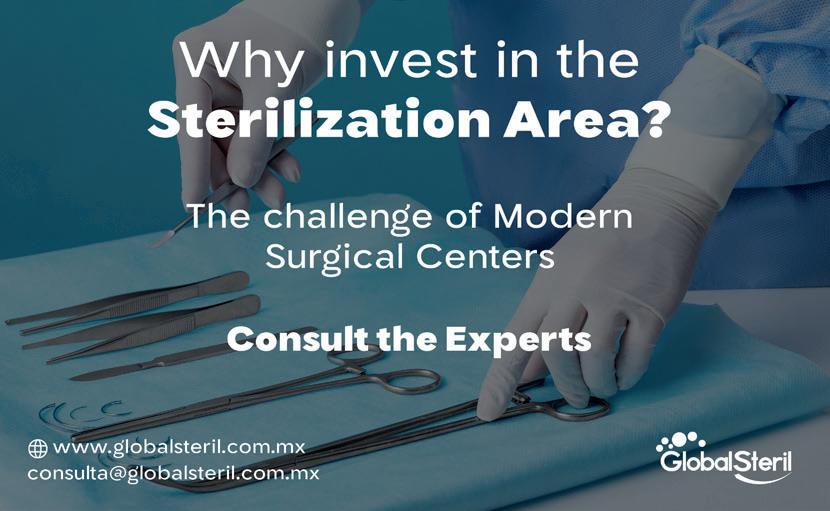
LATEST NEWS
Eng. Samuel GutiErrez Cruz

The Challenge of Modern Sterilization Centers
One of the recurring problems that arise in the Public and Private Health industry, talking about all levels and sizes of hospitals/clinics that have Sterilization areas, is attributed to the justification for the acquisition of Equipment for this area. How to justify an investment? Either for Equipment, Re-engineering of Areas or to acquire modern technologies associated to Information Technologies, such as Management or Traceability Systems within the Sterilization Centers.
To analyze this problem, we must begin by accepting that the regulations in Mexico applicable to equipment in sterile reprocessing plants or sterilization plants are weak, and in most cases are obsolete with respect to the applicable international standards, therefore, the technical specifications attached to the national standards do not help to raise the level of demand in the purchase of equipment or materials.
Another factor to consider is the role played by the sterilization professional associations currently operating in Mexico. Is the scope of these organizations limited to the organization of congresses, courses, links with leading brands, etc.? I believe that their actions should also include constant and persuasive work with government agencies or

branches to guide and promote regulatory change, mainly so that the level of professionalization of the Sterilization Centers is assigned through laws, especially of the people who work in this area.

Finally, all professionals who are involved or immersed in some way in the Sterilization Sciences must work every day to improve our practices and raise the level of service provided, always remembering that our essential function is to deliver sterile materials, as an ethical condition and professional responsibility, beyond the labor conception that perceives the area as just another service within the health center.
In conclusion, all professionals of the Sterilization Sciences must contribute and demand, from the full and precise knowledge, the recognition of the level of preponderance that our work implies, within the control and prevention of Health Care Associated Infections. We must all strive to spread the word that the Sterile Reprocessing Department is, so to speak, the heart of the Hospital. By working together, we can obtain the right recognition and boost investment in this critical area, which plays a major role in health systems.
9 THE EXPERT’S OPINION
CEO at GlobalSteril. Electronics Engineer from the IPN Master in Hospital Administration and Public Health More than 20 years of experience in Hospital and Industrial Sterilization.
Carmen de la Rocha, PhD
 Director of Research and Development at Drox Health Science. PhD in Biotechnology, Master in Biochemical Engineering. Member of the National System of Researchers level I.
Director of Research and Development at Drox Health Science. PhD in Biotechnology, Master in Biochemical Engineering. Member of the National System of Researchers level I.

Is diet evidence-based medicine?
For several decades it has been established that nutrition is a fundamental part of the therapeutic management of multiple diseases, among the most important we find scurvy and beriberi, produced by deficiency of vitamin C and thiamine, respectively, whose treatment consists of the consumption of foods that contain them. Dietary management to treat malnutrition, obesity, and non-communicable diseases, such as hypertension, diabetes, and even cancer, is also widely studied.
On the other hand, it is a fact that therapeutic decisions must be made in what Guyatt called in 1990 “evidence-based medicine”, whose term was extended a couple of years later to “evidencebased health care”, a field in which nutrition is more than relevant.
However, clinical nutrition research is an opportunity to generate more knowledge and discover the correct nutritional indications in different periods of life and pathological states. Although academia has grown exponentially in this area, global efforts are still poor, and the quantity and quality of clinical trials in nutrition are not the same
as, for example, those conducted to evaluate the effectiveness of drugs.
Incorporating the evaluation of the impact of diet in all clinical trials aimed at evaluating the efficacy of a drug could be a first step to consider nutritional therapy as an adjuvant with strong evidence in the management of multiple pathologies. It has even proposed the term “food as medicine” and food stores as “pharmacies”, with specialized food plans as part of the therapies that could belong to health systems.
These proposals, although promising as an improvement in the quality of life of patients, are still utopian and would require many efforts and, most importantly, scientific information to support them.
References
Evidence-Based Medicine Working Group (1992). Evidence-based medicine. A new approach to teaching the practice of medicine. JAMA, 268(17), 2420–2425. https://doi.org/10.1001/jama.1992.03490170092032
Downer S., Berkowitz S. A., Harlan T. S., Olstad D. L., Mozaffarian D., (2020). Food is medicine: actions to integrate food and nutrition into healthcare. BMJ, 369:m2482. doi: 10.1136/bmj.m2482.
10 THE EXPERT’S OPINION
Food has been an essential part of human existence since the beginning of time. Throughout history, the way humans produce, access, and consume food has evolved significantly. In today’s era of technological advances and shifting awareness about sustainability and health, the future of food presents itself as a critical and exciting topic.
The Sustainable Food Revolution: One of the main drivers of the future of food is the growing awareness of sustainability. As the world’s population continues growing, finding more sustainable ways to produce food becomes essential. Vertical farming, precision agriculture, and plant-based food production seem to be the upcoming solutions to feed an ever-expanding population without depleting natural resources.
Technological Advances in Food: Technology plays a prominent role in transforming food. 3D food printing, artificial intelligence applied to agriculture and lab-grown meat are just examples of how technology is revolutionizing the way we produce and consume food. These advances have the potential to make food more efficient and address issues such as world hunger and food security.
Food Personalization: In the future, food could become more personalized than ever. Precision nutrition, driven by genomics and personalized medicine, will allow people to tailor their diets according to their specific needs. Not only will this improve individual health, but it could also contribute to the reduction of diet-related chronic diseases.
Health Awareness and Ethics: The growing concern for health and ethics in food is changing consumption patterns. More people are opting for plant-based diets, reducing meat and dairy consumption, and choosing ethically and sustainably produced foods. This trend promotes the search for healthier and more environmentally friendly food alternatives.
Ethical Challenges and Considerations: Despite exciting advances, the future of food also poses ethical and societal challenges. The equitable distribution of sustainable food, the safety of genetically modified foods, and the preservation of dietary diversity are issues that require continued attention.
The future of food in humans is an ever-evolving field that promises improvements in sustainability, health, and food ethics. As technology and social awareness continue advancing, the way we produce, access, and consume food will continue to transform. To fully benefit from these advances, we must address ethical challenges and ensure everyone has access to nutritious and sustainable food.

DIRECTOR’S OPINION
usA
Daniel Goldstein, MD
Professor and Vice Chairman, Department of Cardiothoracic Surgery, Montefiore Health System, New York, USA. Member of the Scientific Advisor for Vascular Graft Solutions Inc. (Israel). Medical Advisory Board/consultant at Abbott Inc. Book author, clinical investigator, and consultant to several device companies.


Who Takes the Blame for Obesity?
Seventy-three percent of this country is overweight, obese or morbidly obese. No, I am NOT kidding. An article in the Washington Post(1), arbitrarily -and playfully- assigns a “blame percentage” to each of the possible factors: from personal decisions to media to food industry to diet purveyors to nutritionists and scientists. Who has the GREATEST share of blame? FOOD INDUSTRY.
The reason I post this opinion article is because the putative solution is not to try to kill the SUPPLY (food industry with their sugary, fatty, ultra processed foods and supersized calorieladen drinks) - that approach has been tried (see Bloomberg’s effort to eliminate super-sized sodas in NYC and Michele Obama’ effort with public school healthy lunches) and honestly, it is politically impossible -the industry has a welloiled, deep-pocketed lobby(2).
The answer is to kill the DEMAND - and how best to do that, you ask? By reducing people’s hunger, increasing satiety and delaying stomach emptying… sound familiar? Yes, Ozempic and the new generation GLP-1, GIP and glucagon agonists.
Not only will people lose weight (and feel and look better), but they will derive a health benefit (reduction in cardiovascular events) and all this, in turn, will be what tips the collective population scales lower. There have been no alarming safety signals thus far. I am not a gambler but I am fairly certain that the food industry (and their shareholders) is seeing this obesity drug phenomenon as a very real threat to THEIR wellbeing.
References
(1) (Haspel, T. (June 29, 2023). Whose fault is obesity? Most of the blame rests with one culprit. TheWashingtonPost . Retrieved from: https://www.washingtonpost.com/food/2023/06/29/obesity-blame-food-industry-dieting/
(2) Open Secrets (consultation date: July 18, 2023). Food & Beverage: Lobbying, 2022, Retrieved from: https://www.opensecrets. org/industries/lobbying.php?cycle=&ind=N01
12 THE EXPERT’S OPINION
France Julian Mellentin
International expert in the business of food, nutrition, and health. Director and founder of New Nutrition Business. With offices in the UK, France, New Zealand, and the USA and subsidiaries in Japan, Korea, and Finland, they provide global expertise interpreting and explaining nutritional trends in an accessible way on how to market the science of nutrition. https://www.new-nutrition.com/


Lab-cultured meat puts us on the road to a new dietary underclass
Can lab-grown meat transform the world for the better? Or will it create a new dietary underclass of people who eat it because it’s all they can afford?
Given the failure to understand consumers and markets that is in evidence among the developers of lab-grown meat, the latter is the more certain outcome. Professor Mark Post of the University of Maastricht, in the Netherlands, presented the world with its first lab-grown burger patty in 2013. The “meat” is made by harvesting muscle stem cells from a living cow, which are then grown into strands of meat protein. Amino acids, yeast and algae are added to improve taste, texture and colour and the strands are layered together to form a burger. Maastricht University has reportedly set up a spinoff company, with an investment of €10 million, to commercialise cultured meat.
Under the current technology the price will be around €65 ($72) a kilo – more expensive than farmed beef. But with increasing volume the price is expected to fall over time. Already, most readers will have spotted the glaring flaw in the plans for cultured meat: industrial, lab-grown meat is the direct opposite of what people want. Consumers want foods to be “as natural as possible” and freefrom “bad” ingredients. This has become the most powerful force in our industry, driving the strategies of companies from the smallest to the biggest. Lab-
grown meat runs 100% contrary to this powerful current.
Even if lab-grown meat has excellent sustainability credentials, there’s no evidence that will help sell it. Take the example of GMOs (genetically modified organisms). GMOs are rejected by the majority of consumers because consumer beliefs about health and naturalness beat science every time. People will put lab-grown meat in the same box – an example of “bad science” interfering with nature.
The only way that the lab-grown meat business can be bigger is to be cheaper – so cheap that people on low incomes – say the bottom 20% – can overlook it’s failure to be natural. That may well happen.
You can also be certain that the remainder of the consumer market will be consuming premium, grass-fed meat. Or dairy, or seafood, or will be vegetarian. The unintended consequence will be the emergence of a new type of dietary underclass, whose children only ever eat factory protein, while the children of higher income families enjoy protein from a variety of natural sources. That’s not the kind of outcome that optimistic scientific researchers like to look for, but it is a reflection of how markets behave and in this case it’s an outcome that is more probable than possible.
13
THE EXPERT’S OPINION
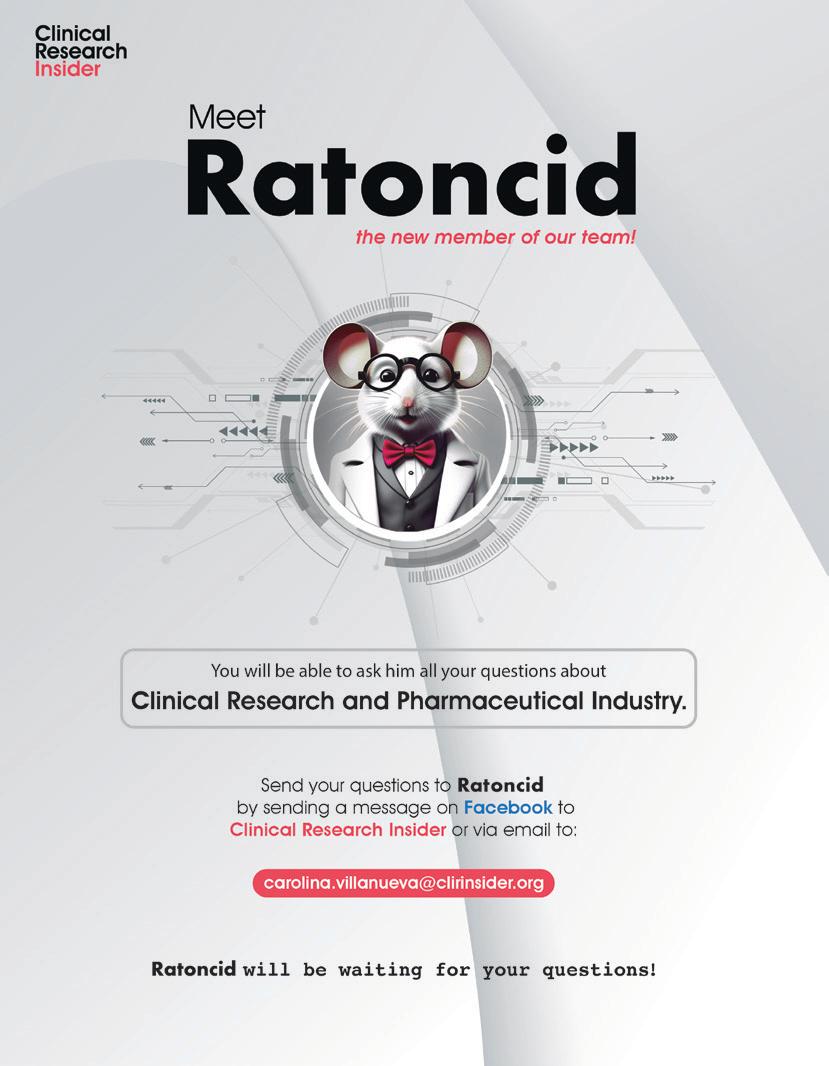

Functional foods against diabetes

Diabetes is a progressive disease, is among the ten leading causes of death worldwide and affects about 537 million people aged 20 to 79. This condition is closely related to insufficient quantity or quality of insulin (a hormone that regulates the concentration of glucose), which results in high levels of glucose (sugar) in the blood. The most common symptoms in people with this condition are frequent urination, sensation of thirst, chronic exhaustion, deficiencies in healing, among others. If diabetes, of any type, is not properly diagnosed and treated, it can lead to various health complications, such as loss of vision, amputation of lower limbs, kidney damage, stroke and heart disease, as well as an increased risk of premature death.
The diet of people suffering from diabetes is a key element in the control and treatment of this disease, which brings with it an area of opportunity for the design and development of functional foods. These are defined as foods that, in addition to providing basic nutritional contributions, have some beneficial property for health since they contain one or more bioactive components with a specific biological effect.
In these terms, there are countless foods that could be classified as functional foods and can be fresh or processed. For example, fish contains omega-3, which is a fatty acid that helps heart health; tomatoes, which contain
16 CENTRAL RESEARCH
an antioxidant pigment (lycopene), have been reported to protect cells against oxidative damage; or pineapple, containing bromelain, an enzyme that favors protein digestion and nutrient assimilation. There are also processed foods that have functional health effects, such as yogurt, a fermented dairy product that has probiotics (beneficial bacteria), which help digestive health, or “boxed cereals” that, in addition to the natural contribution of dietary fiber, are added with vitamins and minerals, essential nutrients for the proper functioning of our immune system.
In the case of diabetes, there are a number of foods that can help regulate and/or reduce glucose levels in the body, and of which you have surely heard. Legumes (such as lentils and beans), chia seeds, olive oil, garlic, apple cider vinegar, inulin (soluble fiber), among others, are foods that help maintain healthy blood sugar levels.
One of the most well-known functional foods among the Mexican population is the nopal cactus. This cactus has been studied for more than 20 years for its anti-diabetic properties and blood sugar lowering effects; its regular consumption in people suffering from diabetes could prevent the complications of the disease, while it has no side effects. Recently, nopal has been the basis for the elaboration of food products for diabetic patients.

Another option of functional foods that have been developed and have been widely accepted due to the ease with which bioactive compounds are incorporated, in addition to their accessibility and consumer preference, are functional beverages. These beverages can be in the form of juices (fruit and/or vegetable), dairy type, infusions derived from plants, among others.
The antidiabetic properties of functional foods are mainly characterized by their inhibitory effect on carbohydrate metabolizing enzymes, such as α-glucosidase and α-amylase. These enzymes are responsible for breaking down complex carbohydrates into simpler sugars, such as glucose, during digestion. The components of functional foods block the activity of these enzymes and, therefore, reduce the amount of glucose available to the body.
As can be seen, there is the possibility of incorporating functional foods into the diets of people suffering from diabetes in order to help them regulate their body’s glucose levels. However, it should always be remembered that before consuming these foods, a nutritionist or health specialist should be consulted, since they are the ones who can recommend effective and safe portions for patients.
17 CENTRAL RESEARCH
Dr. Nayely Leyva-Lopez
CONAHCYT postdoctoral at the Functional Foods and Nutraceuticals Laboratory of the Centro de Investigación en Alimentación y Desarrollo, A. C. (CIAD).

Dr. Jose Basilio Heredia
Head researcher and leader of the Functional Foods and Nutraceuticals Laboratory of the Centro de Investigación en Alimentación y Desarrollo, A. C. (CIAD).


References
American Diabetes Association (2021). ¿Qué es la diabetes? (online). Retrieved from: https://diabetes.org/sites/default/files/2021-09/what-is-diabetes-SPANISH.pdf
[Date of consultation: December 06, 2022].
Dalila, M., Soltane, R., Chrouda, A., Dhahri, A., Pashameah, R.A., Almulla, N. (2021). Antidiabetic Activity of Opuntia spp. En: Ramadan, M.F., Ayoub, T.E.M., Rohn, S. (eds) Opuntia spp.: Chemistry, Bioactivity and Industrial Applications. Springer, Cham. https://doi.org/10.1007/978-3-030-78444-7_22
Gayathry, K. S., John, J. A. (2021). Functional beverages: Special focus on anti-diabetic potential. Journal of Food Processing and Preservation, 45, e15974. https://doi. org/10.1111/jfpp.15974
Statista (2021).Number of adults with diabetes worldwide from 2010 to 2021 (in millions) (online). https://es.statista.com/estadisticas/702299/adultos-con-diabetes-anivel-mundial/ [Date of consultation: July 25, 2023].

18 CENTRAL RESEARCH
The Revolutionary Solution to the Drugs Crisis
BuscaMed stands as an indispensable partner for organizations seeking to maximize efficiency and savings in the procurement of medicines and medical supplies. Through a specialized network that includes more than 30 suppliers, the company offers a variety of medical products at highly competitive prices, with the possibility of achieving savings of up to 35%.
Diverse Catalog and Guaranteed Quality

BuscaMed’s catalog is vast and varied, ranging from patented and generic drugs to highly specialized medical equipment. The company complies with the most rigorous quality standards and is committed to deliver within 1-2 business days throughout Mexico.
Solid Logistics Infrastructure
The robustness of its logistics infrastructure and proactive inventory management allow BuscaMed to avoid interruptions in the supply
of medicines and equipment. This positions it as a strategic ally for medical research centers and highly specialized healthcare organizations.
More than a Supplier: A Strategic Partner
With BuscaMed, organizations not only gain access to a medical supply provider, but also to a partner committed to helping them optimize both medical care and research operations. This analysis suggests that BuscaMed is not simply a distributor in the medical supply sector; it is a strategic partner contributing to the advancement of medical care and research in Mexico.

19
Johnson & Johnson Exceeds Expectations; Reaches $99.8 Billion in Sales
At the end of the second quarter of 2023, the medical device giant’s sales grew to $25.53 billion from $24.02 billion last year, beating the $24.67 billion estimate predicted by analysts. In this report, Joaquín Duato, CEO of the company, mentioned: “We entered the second half of the year from a position of strength with numerous catalysts, including becoming a bio-sector company focused on pharmaceutical innovation and MedTech.”
Ate the beginning of the second half of 2023, its investment in Research and Development was 3,829 million dollars. They are confident that their cancer drugs and the sale of their medical devices will remain on the rise by the end of the year.
16% less in profits for Roche in the first half of 2023
The Swiss laboratory Roche closed the first half of 2023 with a net attributable profit of 7,137 million francs (8,224.55.40 million dollars), equivalent to a decrease of 16.3% compared to the same period of 2022. In total, the company recorded sales of CHF 29.779 billion at the end of July 2023. According to Thomas Schinecker, CEO of Roche, such a decrease in profits is due to the low demand for COVID-19 products.
In the same report, they announced that some of their flagship drugs continue to grow strongly, such as Vabysmo, a treatment for serious eye conditions launched in 2022, which is currently sold in more than 70 countries, reporting sales of more than 1,000 million Swiss francs. They also welcome the US and EU approvals of their blood cancer drug Columvi.
Looking forward to the close of 2023, Thomas Schinecker said: “I am excited about our partnership with Alnylam to develop a potentially transformative medicine for patients living with hypertension, which affects 1.2 billion adults worldwide and is the leading cause of death from cardiovascular disease.”
Global revenue for multiple myeloma drug Revlimid down 39%
Biopharmaceutical company Bristol Myers Squibb reported second-quarter revenue of $11.2 billion, a 6% decrease from the same period in 2022, due to low sales of Revlimid, erosion of the Revlimid and Eliquis generics, and an increase in the number of patients receiving free drugs from Bristol Myers Squibb. However, Giovanni Caforio, chairman and chief executive officer of Bristol Myers Squibb, said its revenue was partially offset by increased demand for
20 BUSINESS & DEVELOPMENT
its online products and those in the new portfolio, which brought the company $8.6 billion and $862 million, respectively.
Teva Pharmaceutical to Pay $4.35 Billion to U.S. for Opioid Crisis
Teva Pharmaceutical Industries, headquartered in Israel, will pay $4.35 billion to about 2,500 state and local governments as well as Native American tribes in the United States to stop thousands of lawsuits filed blaming the drugmaker for the opioid epidemic.
According to statements from the state of Nevada, whose government will receive $193 million, the drugmaker’s inappropriate marketing practices fueled opioid addiction. The drugmaker will be able to pay up to $3.7 billion in cash over the next 13 years and will be able to cover $1.2 billion in Naxalone, an opioid overdosereversing drug, Reuters reports. This resolution is part of a multimillion-dollar agreement where various pharmaceutical and pharmacy chains will pay a total of 17,300 million dollars.
For $1.075 billion, Novo Nordisk adquiere Inversago Pharma to develop obesity treatments
Canadian biotechnology company, Inversago Pharma, is a developer of therapies
for the potential treatment of obesity, diabetes, and complications associated with metabolic disorders. Novo Nordisk’s acquisition of Inversago also includes the purchase of the INV-202 asset, which plays an important role in metabolism and appetite regulation. According to Martin Holst Lange, Executive Vice President of Development at Novo Nordisk “the acquisition of Inversago Pharma will further strengthen our clinical development pipeline in obesity and related disorders.” The transaction is expected to be completed before the end of 2023.
The Eli Lilly laboratory buys the startup Versanis for 1,721 million euros
In the boom of treatments to control weight and with the aim of strengthening its position in the market, Eli Lilly acquired for 1,721 million euros (with a maximum amount of up to 1,925 million dollars) the startup Versanis Bio, a company specialized in the development of drugs against obesity. According to Reuters, Lilly shares rose 3% after its linkage with Versais’ experimental asset called bimagrumab, the flagship drug currently under Phase 2b study in overweight and obese adults, was announced.
Analysts expect the pharmaceutical industry focused on weight-loss drugs to reach $100 billion over the next decade, with Eli Lilly and Novo Nordisk being the top powerhouses.
21 BUSINESS & DEVELOPMENT
Claudia MejIa Morales, PhD Research and Development Analyst at Drox Health Science.


Food and drug interactions. Statins and grapefruit juice
Having a high level of low-density lipoprotein cholesterol (LDL-C) can be dangerous to our health, contributing to the development of atherosclerosis (hardening of the arteries due to accumulation of fats, cholesterol, among other substances) and increasing the risk of coronary heart disease. Statins (for example, atorvastatin, lovastatin and simvastatin) are mainly used to regulate the level of LDL-C, being the most prescribed drugs in the world for this purpose. Statins act as inhibitors of the activity of the enzyme HMG-CoA reductase, which contributes to the synthesis of cholesterol; in response to this enzyme inhibition, the formation of LDL cholesterol is regulated between 20% and 63%. These drugs are then metabolized
References
or degraded in the intestines and liver via the cytochrome P450 (CYP) pathway.
Particularly atorvastatin, lovastatin and simvastatin are degraded by the cytochrome enzyme CYP3A4, thus reducing the amount of drug entering the bloodstream. This process of statin degradation may be slowed if grapefruit-based foods or beverages are consumed during treatment. Grapefruit has different components, among them are furanocoumarins, such as bergamotin (BGT) and 6,7-dihydroxybergamotine (DHB), these are also metabolized by CYP3A4 and the resulting compounds bind to the active site of this enzyme (CYP3A4), causing its inactivation. This blockade in the enzymatic activity of CYP3A4 means that statins cannot be adequately degraded and accumulate in the body, which can trigger liver damage, kidney failure and increase the adverse effects caused by statins. Currently, more than 85 drugs are predicted to interact with grapefruit, increasing the systemic concentration of the drug in the body. Recovery of CYP3A4 activity may take from 24 hours to 3 days and will depend on the type and dose of statin; large amounts of grapefruit juice consumption can inhibit hepatic CYP3A4 leading to worse adverse effects.
As a recommendation, ask your trusted doctor what foods or beverages may interfere with your medication in a similar way to grapefruit juice.
FDA (2021). Grapefruit Juice and Some Drugs Don’t Mix. Retrieved from: https://www.fda.gov/consumers/consumer-updates/grapefruit-juice-and-some-drugs-dontmix#:~:text=Many%20drugs%20are%20broken%20down,much%20drug%20in%20your%20body.
Turner, R. M., & Pirmohamed, M. (2019). Statin-related myotoxicity: a comprehensive review of pharmacokinetic, pharmacogenomic and muscle components. Journal ofClinicalMedicine,9(1), 22.

CENTRAL RESEARCH




Alex Zhavoronkov, Hong Kong / NEW York
PhD
Founder and CEO of Insilico Medicine. Heads the regenerative medicine laboratory at the Federal Clinical and Research Center of Pediatric Hematology, Oncology, and Immunology in Moscow, Russia. Co-founder of the First Oncology Research and Advisory Center. Insilico Medicine, based in Hong Kong and New York, is a global clinical-stage AI-driven drug discovery and development company founded in 2014. https://www.longevitypledge.org/


Reasons Why Collaboration With China Will Help Billions Of People Worldwide Live Longer And Healthier
In 2021, one of the record years in biotechnology investments, about 50 drugs were approved by the FDA. 36 of these were small molecules. In my opinion, only about 5 of these were truly innovative targeting novel mechanisms and novel targets. The 10th revision of the International Classification of Diseases (ICD) contained 55,000 codes for diseases, injuries and conditions. Even if we assume that there are only 10,000 diseases, 50 FDA approvals per year seems to be an extraordinarily small number.
The reason for this small number of innovative and effective therapeutics is the long time, high cost, and low probability of success of drug discovery and development. On average, this process takes 12 years, costs over $2 Billion dollars and fails over 90% of the time. The most innovative therapeutics with novel targets have even higher probability of failure. To get these 50 drugs approved in 2021, the pharmaceutical companies globally spent over $100 Billion and over a decade.
 Courtesy Alex Zhavoronkov, PhD and Midjourney Generative AI, image of two American and Chinese biomedical scientists shaking hands.
Courtesy Alex Zhavoronkov, PhD and Midjourney Generative AI, image of two American and Chinese biomedical scientists shaking hands.

24 CLINICAL COSMOS
The biotechnology industry is very different from any other industry and it is important to understand how it works, and the role China plays in delivering safe and effective medicines to suffering patients worldwide. Sharing risk, expenses, and infrastructure will result in acceleration of global biotechnology and increase the number of innovative drug approvals. Closer collaboration between the US and China in biotechnology would allow investors to share huge risks and returns while benefiting everyone on the planet and making this world a much better place.
in the US, it was 76.1 years. Just think about it, on average, the Chinese live two years longer than Americans, and the Chinese living in Hong Kong live 9 (nine) years longer than Americans. If the right to live is a fundamental human right, the US needs to work hard to “catch up”.
Although the US is the largest funder of biomedical science worldwide, they have not prioritized increasing healthspan and longevity. Many of the advances needed to extend American lives can be delivered by collaborating with China. The cost and speed of drug discovery can be substantially decreased by distributing the workload and risks. A drug discovered in collaboration with China will benefit patients in the US and when the US investors own part of this drug, everyone wins.
Diseases do not have borders and do not discriminate by nationality. In developed countries, the risk of developing cancer, Alzheimer’s, Parkinson’s, and most other diseases depends on life expectancy. And the longer people live, the higher the chances since most of the diseases are associated with and driven by aging. Even at current rates, I should expect one out of every two readers of this article to get cancer in their lifetime. But over the past two decades, several effective cancer therapies were discovered and developed. For example, some patients can be entirely cured by immunotherapy. And many of the recent immunotherapy drugs were discovered, perfected, and made cheaper and more accessible to patients worldwide thanks to the recent boom in biotechnology in China. For many, cancer is not a death sentence anymore.
The US has more to benefit from advances in biotechnology than any other country for two reasons. First, it has the most expensive healthcare system in the world, representing over 18% of the GDP in 2021or $4.3 Trillion.
Second, life expectancy in the US in 2021 was lower than in China. In 2021, life expectancy in mainland China was 78.2 years, in Hong Kong was 85.1, and
China has more scientists and is rapidly advancing in the quality of science
It is natural to expect a nation of over 1.4 billion people who rose out of poverty and, for a very long time, focused on one or two children per family, and invested heavily in education to have more scientists than any other country in the world. Unsurprisingly, between 2018 and 2020 China published 23.4% of the world’s scientific papers, eclipsing the US. China now holds the top place in terms of the highestcited academic papers, according to the journal Science published by the American Academy of the Advancement of Science (AAAS), indicating superior quality of the research. And if we look at the trends, China is just getting started.
Many of these scientists are inventing new methods to decipher the mechanisms of disease, identify promising drug targets, and developing new ways to treat deadly diseases.
25 CLINICAL COSMOS
Advances in biotechnology benefit everyone on the planet, but mostly the US
Courtesy

Many “rare diseases” are not that rare in China
While the definition of a “rare disease” may vary, the European Union defines it as a disease affecting less than 1 in 2,000 citizens. These diseases are difficult to fund and study because small patient populations make these diseases attractive to the investors and difficult to enroll patients into clinical studies.
However, with 1.4 billion people, 1 in 2,000 is 700,000 patients - there are 69 countries in the world with fewer number of citizens. Studying many of these diseases, for example rare liver diseases, may improve our understanding of the broader disease biology and China is stepping up the efforts all around.
China made massive investments in research and development infrastructure
For those, who do not know China, it consists of around 35 provinces and territories that work as a single united organism. However, these provinces compete with each other on economic indicators and many other measures. This competition makes innovation much more evenly distributed - pretty much every region you go to, however remote, will have an innovation hub that is trying to attract, build and grow the innovative enterprises and are trying to build the entire ecosystems of companies that can work together. These innovation hubs conduct their own market research and usually understand who-is-who of the industry at the level of a good technology analyst.
26 CLINICAL COSMOS
Alex Zhavoronkov, PhD and Midjourney Generative AI, illustration of China speed.
For example, in 2020, after Insilico Medicine developed and validated the target discovery engine called PandaOmics and the clinical trials outcomes prediction platform called inClinico, we wanted to build a fully-robotic system to combine these two platforms to enable very rapid disease hypothesis generation, target identification, target validation, and translational medicine with minimal or no human involvement - full automation. Previously, no other company or research institution I know has done this before and we had to think about where we could build such futuristic lab. So I explored several areas in worldwide and in China where this could be done.
We were not looking for funding from the government but we needed to have several companies in one place that could help build the robots, and also help with the development of disease models, tissue engineering, reprogramming of the cells, organoid development, and software development for fully-autonomous systems - you can not do it all by yourself, you need partners. To my surprise, there were several places in China, where these ecosystems existed. One of the most advanced biohubs in China, BioBAY, not only had the ecosystem of companies but was also willing to help attract the missing elements and locate all of them in one small area.
Many of these innovation hubs and park bring together a large number of vendor companies that service the industry and academia. Just like the IT industry, where “designed in California, made in China”, commonly referred to as the “Apple business model” allowed many companies to flourish, the emergence of contract research organizations (CROs) in China enabled thousands of biotechnology companies worldwide to accelerate their research. The market value of the pharmaceutical CROs is projected to exceed $22 Billion in 2024 according to a recent report by EqualOcean.
Many of these CRO companies are publicly traded in China and get rich valuations. This allowed these
companies to raise money from the public market and debt financing and invest in research and development infrastructure that often surpasses the infrastructure of the large pharmaceutical companies in both scale and complexity. Furthermore, much of this infrastructure is getting rapidly automated with the push toward laboratory robotics. This is not a recent trend. Some of the largest CROs have been inbusiness since 2004 and scaled globally. If the US would like to catch up, it needs to invest substantially more and in parallel and in collaboration with China. This would benefit the patients and the healthy people alike.
China is rapidly improving the regulation for the acceleration of the clinical trials
In the past, China’s clinical trial process was extremely bureaucratic and lengthy and borrowed the best and the worst practices from the US and European regulators. However, in recent years, it realized that much of the time is wasted in negotiations between the companies and regulatory agencies. And it introduced strict standards and deadlines for the regulatory agencies to respond. It also revamped the staff at the regulatory agencies that now includes high-level scientists and clinicians that are motivated to deliver innovative therapeutics to patients faster.
And while I have not seen any dramatic speed records yet, the approval process has been greatly expedited. These changes now make China a very attractive place to conduct the efficacy studies. In the past, most companies chose to first conduct the efficacy studies in the US and later re-do the studies in China. Today, many companies choose to perform the efficacy studies in the US and China in parallel. Greater collaboration between the regulatory agencies may help accelerate the delivery of novel efficacious therapeutics globally.
27 CLINICAL COSMOS
Push toward innovative therapeutics in China

Very often, the pharmaceutical industry in China is portrayed as the “copycat industry” as the local pharmaceutical companies preferred to either develop similar or in-license the effective therapeutics from the Western companies.
However, in recent years, the government made innovation in biotechnology a national priority.
To the disappointment of the many large pharmaceutical companies that were making enormous profits on off-patent generics, or “me too” copycat therapeutics, only the innovative drugs can get substantial profit margins. Also, biotechnology companies going public must demonstrate that they have innovative therapeutics in their pipelines.
28 CLINICAL COSMOS
Biotechnology is a “molecular casino” with multi-billion dollar stakes where the loser loses
Courtesy Alex Zhavoronkov, PhD y Midjourney Generative AI, illustration of China’s push for novel medicines requiring high degree of novelty.
Biotechnology is a molecular casino because it involves taking high risks in order to potentially achieve high rewards. The field involves using molecular and cellular techniques to develop new products and technologies, and these efforts can be very costly. However, if a biotechnology company is successful in developing and bringing a new product to market, the returns can be substantial. For example, a successful new drug could generate

billions of dollars in revenue for the company that developed it.
At the same time, biotechnology has the potential to benefit everyone, not just the companies that are successful in the molecular casino. This is because the products and technologies developed through biotechnology can have a wide range of applications, from improving public health to increasing agricultural productivity. So even if a particular biotechnology company does not make substantial returns, the advances it helps to bring about can still have a positive impact on society as a whole.
29 CLINICAL COSMOS
everything and the winner while making substantial returns, also benefits everyone
Courtesy: Alex Zhavoronkov, PhD y Midjourney Generative AI, image of a “molecular casino”.
Collaboration in AI-Powered and Robotics-Enabled Drug Discovery Benefits Everyone
AI-powered and robotics-enabled drug discovery have the potential to revolutionize the way we approach and treat diseases, making them an area of collaboration that should be prioritized by both China and the United States. This is because the development of new and effective medications benefits not just the countries involved in their discovery, but the entire global community.
By collaborating, China and the United States can share the risk and cost of drug discovery, giving both countries more “shots on goal” and increasing the chances of success. This not only benefits the countries involved, but also the patients who stand to benefit from the development of new and innovative treatments.
In addition to the financial benefits of collaboration, there is also a strong scientific argument for working together in this field. Biotechnology and AIenabled drug discovery are highly interdisciplinary fields, requiring expertise in areas such as biology, chemistry, computer science, and engineering. By pooling the resources and expertise of both countries, we can bring together some of the best and brightest scientists and researchers to work on the most pressing health challenges facing the world today.
In conclusion, biotechnology and AI-enabled drug discovery are areas of collaboration that should be prioritized by both China and the United States. By working together, we can share the risk and cost of drug discovery, bring together some of the best and brightest scientists and researchers, and ultimately benefit the global community by developing new and effective treatments for a wide range of diseases.
This article was originally published by Alex Zhavoronkov, PhD, at Forbes.com on January 4, 2023. Excerpt provided by the author for Clinical Research Insider.

30 CLINICAL COSMOS




 Wendy LOpez Romero, PhD Research and Development Analyst at Drox Health Science. PhD in Innovation in Medical and Pharmaceutical Biotechnology. Master in Molecular Biology.
Wendy LOpez Romero, PhD Research and Development Analyst at Drox Health Science. PhD in Innovation in Medical and Pharmaceutical Biotechnology. Master in Molecular Biology.


Salad as an antidepressant
The cost of depression to the global economy is estimated at US $1 trillion annually and is estimated to affect 5% of the world’s adult population. This chronic disorder is characterized by mood dysregulation, emotions of sadness, emptiness, or irritability, as well as negative self-evaluation and withdrawal/ isolation behaviors. Depression is responsible for 50 to 70% of suicides worldwide and is the second leading cause of death between the ages of 15 and 29. The average response rate to treatment for depression is 20 to 30%, which has led researchers to consider other modifiable lifestyle factors, such as dietary patterns, for example, to modify depressive symptoms.
The growing scientific discipline known as nutritional psychology or nutritional psychiatry, which recognizes the importance of factors such as physical exercise, spiritual practices, and social support for the promotion of mental health, has been dedicated to exploring how food influences not only our immediate mood but also the modulation of symptoms of depression. anxiety, attention deficit hyperactivity disorder (ADHD), among other conditions.
One of the pillars of this area is that “proper nutrition leads to better mental health” because in this way the nutritional needs that allow the brain to function properly are covered. Thus, dietary patterns or diets containing whole foods and various nutrients, such as Mediterranean, Norwegian, and Japanese, can have a positive impact on many conditions, including depression.
Similarly, high-quality vitamin and mineral supplements, as well as amino acids, herbal formulations, and probiotics, also contribute positively. To date, associations between dietary patterns and depression are diverse and exist throughout life, all the way from childhood to adulthood. Findings from a narrative

32 CENTRAL RESEARCH
systematic review of 20 studies in children and young adults show that a high-quality dietary pattern is associated with lower levels of depression and that, conversely, a low-quality dietary pattern is associated with higher levels of depression.
Regarding the factor of the quality of a person’s dietary pattern, a study where 496 participants identified as omnivores, vegetarians, or vegans were evaluated, showed that a high-quality plant-based dietary pattern significantly reduces depressive symptoms, concerning those who consume all kinds of foods.

It should be emphasized that the quality of the dietary pattern consumed is a determining factor, as some low-quality foods, such as those high in sugar, saturated fat, and refined grains, are also consumed in plant-based dietary patterns. Therefore, both meat-based and vegetarian diets have the potential to be of high or low quality.
Despite the promising results of several studies and the relationships that have been established between the quality of food with the reduction of depressive symptoms, it is necessary to generate more publications of interventions such as those already mentioned, to fully understand the bidirectional relationship between these two factors and that more doctors focus on improving the diet of their patients, as adjuvant therapy for depression.
References
Walsh, H., Lee, M., & Best, T. (2023). The Association between Vegan, Vegetarian, and Omnivore Diet Quality and Depressive Symptoms in Adults: A CrossSectional Study. International Journal of Environmental Research and Public Health, 20(4), 3258. MDPI AG. Retrieved from http://dx.doi.org/10.3390/ijerph20043258
Organización Mundial de la Salud. (2017). Depresión y otros trastornos mentales comunes: estimaciones de salud global. Organización Mundial de la Salud; Ginebra, Suiza.
Jacka F. N. (2017). Nutritional Psychiatry: Where to Next?. EBioMedicine , 17, 24–29. https://doi.org/10.1016/j.ebiom.2017.02.020
Khalid, S., Williams, C. M., & Reynolds, S. A. (2016). Is there an association between diet and depression in children and adolescents? A systematic review. TheBritish JournalofNutrition , 116(12), 2097–2108. https://doi.org/10.1017/S0007114516004359
Baden, M. Y., Liu, G., Satija, A., Li, Y., Sun, Q., Fung, T. T., Rimm, E. B., Willett, W. C., Hu, F. B., & Bhupathiraju, S. N. (2019). Changes in Plant-Based Diet Quality and Total and Cause-Specific Mortality. Circulation , 140(12), 979–991.
33 CENTRAL RESEARCH
Saul Flores Unzueta,
 PhD
PhD
Nutrition in Clinical Research

According to WHO (2020), approximately 3 million people cannot afford a healthy diet. A minimally healthy diet contains at least 2,300 calories and 69 grams of protein per person per day, which exceeds the international extreme poverty line of $1.9 per person, making it unaffordable.
In clinical studies, specialized nutritional follow-up is only considered in those protocols focused on drugs that have proven weight reduction or when the target disease of these studies is completely linked to diet (obesity, metabolic and cardiovascular diseases). In most clinical studies, they are only limited to providing advice on a “healthy lifestyle” for the patient in a general way.
How many or which diseases are related to nutrition?
According to FAO (Food and Agriculture Organization/WHO 2020), “If the world’s population ate a healthy diet, 97% of the costs of noncommunicable diseases could be saved”; that is to say, cardiovascular diseases (such as heart attacks and strokes), cancers, chronic respiratory diseases (such as chronic obstructive pulmonary disease and asthma) and diabetes; kidney diseases (such as renal failure), gastrointestinal diseases (gastritis, irritable bowel syndrome, celiac disease); among many others.
Is nutrition that important? Yes. Health is the balance and coordination of all aspects: physical, emotional, social, and family It is not about separating each one. All these aspects are regulated to provide adequate health, and proper nutrition is a fundamental pillar for this balance.
A research study provides technological advances and novel drugs for the treatment of diseases. Such tools are not always available in the public sector in our country and, on many occasions, neither in the private sector. Mandating specialized followup in nutrition in clinical trials is likely to favor the prognosis and evolution of people who voluntarily participate in clinical trials. In reality, the “obligation” is not that it is described within the protocol procedures but that, as physicians and health personnel, we have the responsibility to provide the patient with complete follow-up and treatment of their disease.
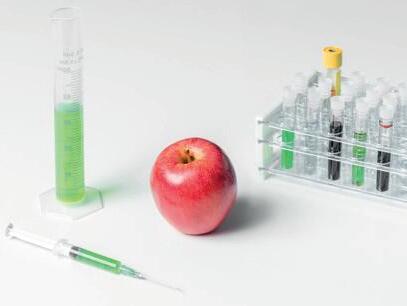
34 CENTRAL RESEARCH
Doctor of Science in Biotechnology. CEO of Lahoja Association for Research and Pharmacovigilance.
“97% of healthcare costs could be saved...”
SOLUCIONES KENKO
DESIGN PROTOTYPE MANUFACTURE

DISCOVER THE INNOVATIVE WORLD OF DESIGN AT KENKO SOLUTIONS. OUR EXPERT TEAM CRAFTS DESIGNS THAT BLEND FORM AND FUNCTION, ENSURING YOUR PRODUCT STANDS OUT IN THE MARKET. EXPLORE HOW OUR DESIGN PROCESS SPARKS INNOVATION, ESPECIALLY IN THE HEALTHCARE, BIOTECH AND IOT DEVICES HARDWARE/ FIRMWARE AND MECHANICAL DESIGN







TAKE A PEEK INTO THE PROTOTYPING PROWESS OF KENKO SOLUTIONS. WE TRANSFORM IDEAS INTO TANGIBLE PROTOTYPES, REFINING CONCEPTS AND FUNCTIONALITY. LEARN HOW OUR PROTOTYPING EXPERTISE CAN FAST-TRACK YOUR PRODUCT DEVELOPMENT VISIT SOLUCIONESKENKO COM


UNLOCK THE POWER OF EFFICIENT MANUFACTURING WITH KENKO SOLUTIONS. WE BRING YOUR DESIGNS TO LIFE, DELIVERING HIGH-QUALITY PRODUCTS. EXPLORE OUR MANUFACTURING CAPABILITIES AND HOW WE CAN SCALE PRODUCTION TO MEET YOUR NEEDS.
NOM-241
12 SEPTEMBER 2023
MISSION: TURN INNOVATIVE IDEAS INTO REALITY, CATALYZING THE PRODUCT DEVELOPMENT PROCESS KENKO TV


Blanca Elizabeth Ruiz alvarez, M.Sc.


The value of knowing your gut microbiota

Globally, population health is always an important issue. According to the WHO, chronic diseases kill 41 million people each year, 15 million of them in the productive age, that is, from 30 to 69 years(1). On the other hand, over the last decades, scientific advances have shown that gut microbiota (those microorganisms that reside in an ecological niche: gut, and that establishes symbiotic relationships between them and the host)(2) has a determining influence on the host’s metabolism, immune system, and inflammatory response, which determines its state of health or disease. Nevertheless, gut microbiota is a parameter that public and private health services usually do not consider indicating a treatment.
Microbiota in the human gut is found in about 1014 bacteria and more than 95% are found in the colon, which represents between 1-3% of body weight(2). Microbiota in the colon is composed of commensals and synbiotic microorganisms (including bacteria, archaea, viruses, bacteriophages, and some fungi) (3). This composition may vary in accord to different factors (delivering, breastfeeding, diet lifestyle, host physiology, ingested microbes that compete with resident microbiota, pharmacological treatments, geography, genetics,
host inflammation, etcetera)(4). Nevertheless, there are mainly five major microbial phyla that represent about 90% of bacteria from microbiota: Bacillota, Bacteridota, Pseudomonadota, Actinomycetota, and Verrucomicrobia(5;6). And a significant fraction of these bacteria is continuously stable such as Bacteroides, Eubacterium, Faecalibacterium, Alistipes, Ruminococcus, Clostridium, Roseburia, and Blautia(6).
The study of gut microorganisms has been performance using different techniques. Nevertheless, molecular biology is the best way to determine the presence, absence, and abundance of these microorganisms because most of them are uncultured (about 75-90%) because they are anaerobic. In this context, to study them, their genetic material is isolated and studied by sequencing the 16S rRNA gene for bacteria and after sequencing, bioinformatics analyses are performed(7).
But what does the presence or absence of these microorganisms represent?
38 CENTRAL RESEARCH
M.Sc. in Biotechnological Innovation specializing in Medical and Pharmaceutical Biotechnology from CIATEJ. Operations Manager of Grupo MaBiosis S.A. de C.V. since 2018. Ph.D. Candidate in Biotechnological Innovation specializing in AgriFood Technology by CIATEJ and Ph.D. candidate in Plant Biology by the Institut sur la Nutrition et les Aliments Fonctionnels (INAF), Laval University, Quebec, Canada.
To understand their role and the importance of quantity (abundance) and variety it is necessary to know their functions and their characteristics at different levels. For example, the phyla: Bacteroidota (before called Bacteroidetes), are usually the predominant microorganisms in human gut microbiota, and they play an important role in carbohydrate metabolism, expressing enzymes such as glycosyltransferases, glycoside hydrolases, and polysaccharide lyases(7), that allows digest carbohydrates ingested on the diet. On the other hand, the second phyla more abundant in the human gut is Bacillota (before called Firmicutes), to which belongs Bacilli, Clostridia, Erysipelotrichia, Mollicutes, Negativicutes, and Thermolithobacteria, and they play an important role in health host by degrading different kinds of fibers, breaking them out into oligosaccharides and monosaccharides that can be absorbed by human cells or using by other microbes(7;8).
On the other side, Pseudomonadota (before called Proteobacteria) the third phyla more abundant in gut microbiome, is represented by a group of microorganisms characterized by include opportunist pathogens, they are important for the digestive process too, but an increase in their abundance, may cause diseases(9;10). Cyanobacteria are bacteria that could be ingested in food, and the presence of some genes for the biosynthesis of vitamins suggests a beneficial effect on the host. Nevertheless, there is some evidence that gut cyanobacterial abundance has a relationship between health control and diseased groups on neurodevelopment, neurodegeneration, obesity, allergy rhinitis, and other diseases (11;12).
Others two representative phyla of gut microbiota are Actinomycetota and Verrucomicrobia Actinomycetota (before called
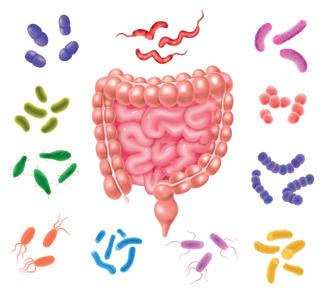
Actinobacteria) although they represent a small percentage, represents a group of commensal bacteria that is important in the development and maintenance of gut homeostasis, modulate gut permeability, immune system, and metabolism(13). While Verruomicrobia is a group of bacteria that degrades mucin and contributes to gut health and glucose homeostasis(14), the most important bacteria that belong to this phyla is Akkermansia muciniphila, which has been studied as a very promising probiotic(15).
One of the most important characteristics of gut microbiota is that it increases the host’s physiological and metabolic capacity, by promoting submucosal capillary network and immune system development. Gut microbes have about 80 families of glucose-hydrolasetype enzymes that are crucial to degrade nondigestible carbohydrates that humans ingest in food but are not able to digest. Also, they act as a barrier and protect the intestine against pathogens; they conjugate bile acids, and produce B12 and K vitamins, and short-chain fatty acids that participate in very important pathways in human metabolism(16;17;18).
39 CENTRAL RESEARCH
Nevertheless, gut microbiota is unique for every individual, and so is gut microbiota metabolism. Recent studies determined that exists an interindividual variability given by genetic and environmental factors(5). What does it mean? Mainly, a specific treatment (diet/ supplementation) may have or not have a therapeutical effect on different hosts, it depends on host digestion and metabolism, but on the other hand, that depends also on their gut microbiota composition, digestion, and metabolism (gut metabotype). A gut metabotype is a metabolic phenotype characterized by a specific capacity to produce metabolites from a determined compound by microbes’ metabolism(19).
For example, García-Villalba et al.(20) found that some poly phenols (ellagitannins) metabolism can yield three different metabotypes
depending on the individuals’ microbial profile and their metabolism will have or not an effect on human health to produce urolithins and neuroprotection. The same phenomenon was previously observed in the cardiovascular and metabolic response where the metabolism of food phytochemicals, and the production of derived metabolites will have an effect on the health host, but more studies are needed to elucidate this mechanism. For now, there are research groups that continue this work to personalize nutrition and medicine. These types of studies are being used more frequently in medicine and nutrition, and are becoming increasingly accessible to your patients, as they can provide valuable information for the diagnosis and treatment of diseases.
References
1. World Health Organization. (2022). Noncommunicablediseases . https://www.who.int/news-room/fact-sheets/detail/noncommunicable-diseases
2. Morales, P., Brignardello, J., & Gotteland, M. (2010). La microbiota intestinal: Un nuevo actor en el desarrollo de la obesidad. Revista Médica de Chile,138(8). https://doi.org/10.4067/S003498872010000800013
3. Selber-Hnatiw, S., Rukundo, B., Ahmadi, M., Akoubi, H., Al-Bizri, H., Aliu, A. F., Ambeaghen, T. U., Avetisyan, L., Bahar, I., Baird, A., Begum, F., Ben Soussan, H., Blondeau-Éthier, V., Bordaries, R., Bramwell, H., Briggs, A., Bui, R., Carnevale, M., Chancharoen, M., … Gamberi, C. (2017). Human Gut Microbiota: Toward an Ecology of Disease. FrontiersinMicrobiology,8 , 1265. https://doi.org/10.3389/ fmicb.2017.01265
4. Ruiz Álvarez, V. R., Peña, Y. P., & Acosta, M. R. (2010). Microbiotaintestinal,sistemainmuneyobesidad.34 . http://scielo.sld.cu/scielo.php?script=sci_arttext&pid=S0864-03002010000300007
5. Bibbò, S., Ianiro, G., Giorgio, V., Scaldaferri, F., Masucci, L., Gasbarrini, A., & Cammarota, G. (2016). The role of diet on gut microbiota composition. EuropeanReviewforMedicalandPharmacological Sciences,20(22), 4742–4749.
6. Ruan, W., Engevik, M. A., Spinler, J. K., & Versalovic, J. (2020). Healthy Human Gastrointestinal Microbiome: Composition and Function After a Decade of Exploration. DigestiveDiseasesand Sciences,65(3), 695–705. https://doi.org/10.1007/s10620-020-06118-4
7. Jandhyala, S. M. (2015). Role of the normal gut microbiota. WorldJournalofGastroenterology,21(29), 8787. https://doi.org/10.3748/wjg.v21.i29.8787
8. Sun, Y., Zhang, S., Nie, Q., He, H., Tan, H., Geng, F., Ji, H., Hu, J., & Nie, S. (2022). Gut firmicutes: Relationship with dietary fiber and role in host homeostasis. CriticalReviewsinFoodScienceand Nutrition,1–16 https://doi.org/10.1080/10408398.2022.2098249
9. Bradley, P. H., & Pollard, K. S. (2017). Proteobacteria explain significant functional variability in the human gut microbiome. Microbiome,5(1), 36. https://doi.org/10.1186/s40168-017-0244-z
10. Rizzatti, G., Lopetuso, L. R., Gibiino, G., Binda, C., & Gasbarrini, A. (2017). Proteobacteria: A Common Factor in Human Diseases. BioMed Research International, 2017, 1–7. https://doi. org/10.1155/2017/9351507
11. Hu, C., & Rzymski, P. (2022). Non-Photosynthetic Melainabacteria (Cyanobacteria) in Human Gut: Characteristics and Association with Health. Life,12(4), 476. https://doi.org/10.3390/life12040476
12. Redondo-Useros, N., Nova, E., González-Zancada, N., Díaz, L. E., Gómez-Martínez, S., & Marcos, A. (2020). Microbiota and Lifestyle: A Special Focus on Diet. Nutrients,12(6), 1776. https://doi. org/10.3390/nu12061776
13. Binda, C., Lopetuso, L. R., Rizzatti, G., Gibiino, G., Cennamo, V., & Gasbarrini, A. (2018). Actinobacteria: A relevant minority for the maintenance of gut homeostasis. DigestiveandLiverDisease, 50(5), 421–428. https://doi.org/10.1016/j.dld.2018.02.012
14. Cai, X., Deng, L., Ma, X., Guo, Y., Feng, Z., Liu, M., Guan, Y., Huang, Y., Deng, J., Li, H., Sang, H., Liu, F., & Yang, X. (2020). Altered diversity and composition of gut microbiota in Wilson’s disease. ScientificReports,10(1), 21825. https://doi.org/10.1038/s41598-020-78988-7
15. Macchione, I. G., Lopetuso, L. R., Ianiro, G., Napoli, M., Gibiino, G., Rizzatti, G., Petito, V., Gasbarrini, A., & Scaldaferri, F. (2019). Akkermansia muciniphila: Key player in metabolic and gastrointestinal disorders. EuropeanReviewforMedicalandPharmacologicalSciences,23(18), 8075–8083. https://doi.org/10.26355/eurrev_201909_19024
16. Armougom, F., Henry, M., Vialettes, B., Raccah, D., & Raoult, D. (2009). Monitoring Bacterial Community of Human Gut Microbiota Reveals an Increase in Lactobacillus in Obese Patients and Methanogens in Anorexic Patients. PLoSONE,4(9), e7125. https://doi.org/10.1371/journal.pone.0007125
17. Le Chatelier, E., Nielsen, T., Qin, J., Prifti, E., Hildebrand, F., Falony, G., Almeida, M., Arumugam, M., Batto, J.-M., Kennedy, S., Leonard, P., Li, J., Burgdorf, K., Grarup, N., Jørgensen, T., Brandslund, I., Nielsen, H. B., Juncker, A. S., Bertalan, M., … Pedersen, O. (2013). Richness of human gut microbiome correlates with metabolic markers. Nature,500(7464), 541–546. https://doi.org/10.1038/nature12506
18. Schwiertz, A., Taras, D., Schäfer, K., Beijer, S., Bos, N. A., Donus, C., & Hardt, P. D. (2010). Microbiota and SCFA in Lean and Overweight Healthy Subjects. Obesity,18(1), 190–195. https://doi. org/10.1038/oby.2009.167
19. Espín, J. C., González-Sarrías, A., & Tomás-Barberán, F.
Human evidence and the possible link to the gut microbiota. MolecularAspectsofMedicine,89 , 101109. https://doi.org/10.1016/j.mam.2022.101109
40 CENTRAL RESEARCH
A. (2017). The gut microbiota: A key factor in the therapeutic effects of (poly)phenols. BiochemicalPharmacology,139 , 82–93. https://doi. org/10.1016/j.bcp.2017.04.033
20. García-Villalba, R., Tomás-Barberán, F. A., Iglesias-Aguirre, C. E., Giménez-Bastida, J. A., González-Sarrías, A., Selma, M. V., & Espín, J. C. (2023). Ellagitannins, urolithins, and neuroprotection:

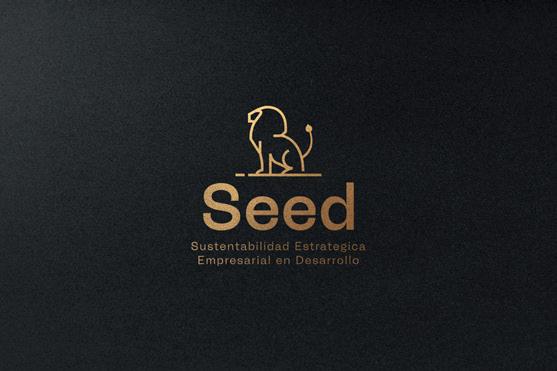





 Oscar Mata, PhD
Oscar Mata, PhD
Why do some launches fail in the pharmaceutical industry?

The commitment to innovation is the reason for being of the pharmaceutical industry, whose efforts and investments are devoted to researching and developing new drugs to improve people’s health and quality of life. This enormous task, with its successes and also its failures, has meant that in recent decades medicine has made such progress that people today live longer and better than ever before, which is one of the great achievements of modern history.
However, it is important to bear in mind that it takes an average of 10 to 12 years from the time a company in the pharmaceutical industry starts researching a molecule until it is marketed. It only takes about four years to reach the clinical trial stage, that is, when the drug is tested on humans, during which time a promising compound is identified and the first tests are carried out to verify its safety. Fewer than 10% of those compounds that reach the clinical trial stage become drugs available to physicians and patients. Of these, only three out of ten
will generate revenues that exceed average research and development (R&D) costs.
According to a study by McKinsey & Company, approximately 66% of pharmaceutical product launches fail to meet pre-launch sales expectations, or more than half of them. Moreover, for those that do, only 53% continue to exceed third-year forecasts. In a market where the Food and Drug Administration (FDA) has approved 167 new drugs in the last five years, each launch must be optimized to take advantage of the current market opportunity.
So why do they fail?
The reasons may be several, and no, we are not going to discover warm water, I know, but we may not be asking the right questions at the right time in this regard. From 2005 to 2022, only 7.8% of drugs that moved from clinical trials to the FDA approval process were approved. By 2022, Forbes estimated that 92% of drugs were approved by the FDA. This

42 CLINICAL COSMOS
Physician, Specialist in General Surgery, PhD in Human Physiology. Scientific advisor in the pharmaceutical industry in Latin America. Researcher and academic.
Venezuela / Mexico
dramatic growth opened up a huge opportunity for pharmaceutical product launches.
In the past, companies such as Somaxon, makers of an insomnia drug called Silenor, experienced massive failures due to lengthy FDA approval times. In Somaxon’s case, multiple attempts at the FDA approval process ended in a $170 million loss. By the time they managed to enter the market, the sales team was downsized amid stiff competition. Did you see that? Extended times, for a drug in a captive audience, where not only did a health problem have to be solved, but a secondary need had to be “generated” as well. If we think
about it, it was destined to fail for obvious reasons. This from the total planning of the business case. Timing, audience, indications, consumption/usage projections, not always being innovative in the market is enough to determine the success of a launch, we must take all these factors into account, as we are talking about millions of dollars in losses.
A look at the numbers: the sample comprises 210 new molecular entities launched between 2010 and 2019, for which consensus forecasts of evaluating one year before launch were available.
Source: EvalueatePharma, McKinsey analysis.

43 CLINICAL COSMOS
Looking at another pharmaceutical launch failure would reflect a similar fate: small sales teams burdened by declining salaries during the commercialization phase of a launch, ultimately leading to failed sales quotas. Not a happy ending.
This is the focus of the international report by the consulting firm Deloitte, Ten years on. Measuring the return from pharmaceutical innovation 2019. For the past ten years, this consulting firm has annually evaluated the performance of innovation in the biopharmaceutical sector based on the evolution of the portfolio of drugs in their final R&D phases of a group of twelve leading pharmaceutical companies from around the world. The study reveals that the expected return on R&D investment in new drugs for pharmaceutical companies currently stands at just 1.8%, the lowest historical record in the last decade. And it adds that this return accumulates a decline of 8.3 percentage points since 2010, when the first study found a return of 10.1%.
The Deloitte report also notes that peak sales per new drug reaching the market have fallen by as much as 54% over the past decade, from $816 million in peak sales in 2010 to $376 million in 2019. And by contrast, the average cost of developing and commercializing a new drug has risen by nearly 70% since 2010, reaching $1.981 billion. This represents an increase of $800 million per drug since the first report was released, when it was $1.188 billion.

High patent costs plus lost revenue: chaos
Yes, although there were more FDA approvals, the pharmaceutical industry is still very expensive. R&D and patent costs have driven extreme consolidation in recent decades. The top 30 pharmaceutical companies that
existed in 1989, merged and there were only 9 companies left by 2010. Even with the merger, big pharma companies still have patent and operating cost issues leading to revenue losses and budget constraints. As a result, sales teams
are constantly stretched beyond their capacity, impacting the success of launches and sales quotas.
44 CLINICAL COSMOS
So, there is a lot of innovation, but these conditions persist. Shouldn’t there be a greater focus on using innovation to reduce operating costs and produce high sales figures? Technology can improve the sales pipeline,
to the sales pipeline. A 2015 report published by Cegedim Strategic Data found that 25% of physicians are active consumers of digital communications to exchange information. That percentage is only growing and growing; pay attention. It’s the same case with in-person meetings, they’ve become less necessary, and sales forces continue to adapt; pharmaceutical salespeople must stay on top of that wave, not wait for a new one to come along. After a scary stretch between 2010 and 2012, where we witnessed massive industry layoffs, a more optimistic report from the Bureau of Labor Statistics predicted a 16% annual employment growth rate for pharmaceutical salespeople through 2020, obviously due to the new pandemic reality; it changed everything.
Now this issue is less about growth and job security and more about the fit and value of the vendor-physician relationship. Since the implementation of the Sunshine Act, a financial regulation to increase payment transparency, some physicians have become reluctant to meet with vendors due to increased scrutiny for any activity involving cash or incentives.
Another medical report from DIG’s Connected found that 29% of U.S. physicians agree that the Internet has decreased their trust in vendors, but 26% of physicians surveyed went online after meeting with a vendor. This is important, as technology hesitations should be a natural extension of current processes on both sides. Sales reps have the opportunity to make this gradual shift by using technologies to drive productivity and convenience.
reduce marketing and search time, and improve communications. Digital products and marketing tools have added a new dimension
In short, the pharmaceutical industry has analyzed the market lightly and has failed to understand it well and to assume its changes promptly. It is valid and necessary to resume strategies fundamentally aimed at minimizing these risks.
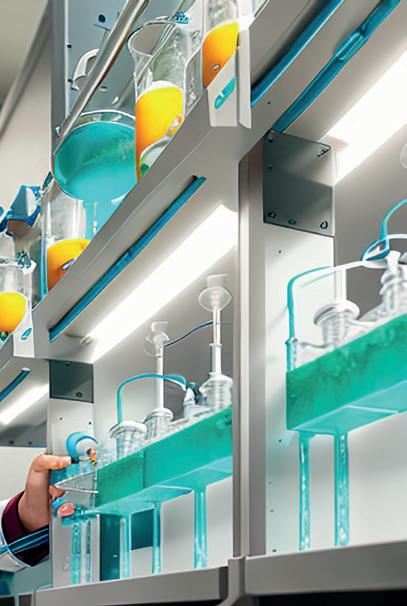
45 CLINICAL COSMOS
Do probiotics work?
It is estimated that the global probiotics market moves more than 2,500 million dollars a year, and it is estimated that this figure can easily double in the coming years. It is a sector with an upward trend: an increasingly aging population with more pathologies, a consumer increasingly concerned about their health and easily accessible products.

Probiotics are defined as “live microorganisms that, when administered at an appropriate concentration, confer some health benefit to the host.” Other related concepts are those of prebiotics (a substrate used selectively by host microorganisms), synbiotics (a mixture of both living microorganisms and substrates), or postbiotic (a preparation of dead microorganisms and/or their components). In all cases its consumption should confer a health benefit.
Professor Ignacio LOpez-Goñi


In the last decade, research on the gut microbiome has experienced an exponential increase and the amount of information we have accumulated is extraordinary. Today we know that we are actually a complex ecosystem filled with hundreds of millions of interactions between our own human cells and our microbes, and that our health dependso on that balance. The study of the human microbiome has been accompanied by a growing interest in probiotics as a way to manipulate or modulate our microbiota. Therefore, there are more and more reviews that try to clarify if probiotics are really useful, if they can modify our microbiota, if they have any efficacy or even some side effect.
The confusing clinical efficacy of probiotics
There are many trials that ensure that probiotics have a preventive and even therapeutic (curative) effect on some health problems: from acute diarrhea associated with antibiotic consumption or Clostridioides difficile infections, irritable bowel syndrome, neonatal sepsis and enterocolitis, Helicobacter pylori infection, respiratory
46
PhD in Biology and Professor of Microbiology, Faculty of Medicine, University of Navarra (Pamplona, Spain). Member of the American Society of Microbiology (ASM), of the Spanish Association of Scientific Communication, and president of the Teaching and Dissemination group of the Spanish Society of Microbiology (SEM).
Lilly Foundation Scientific Dissemination Award, COSCE Award for the Dissemination of Science, and CSIC-BBVA Foundation Award for Scientific Communication (2021). In 2023 he has received the Science Communication Award in Spanish.
E-mail: ilgoni@unav.es Twitter: @microbioblog
infections, atopic dermatitis, cardiovascular risk, and even anxiety or depression. Many studies have suggested that probiotics modulate the immune response by affecting the expression of genes related to immunity and inflammation. Probiotics have been linked to cytokine release and IgA secretion. It has also been suggested that probiotics can modulate the original microbiota or normalize it when it is disturbed, inhibit and block the colonization of other pathogenic bacteria, stabilize the epithelial barrier, promote mucus secretion or raise the levels of some compounds such as butyrate or other short-chain fatty acids, with health benefit.
Unfortunately, for most of these cases there are similar works with negative and even opposite results at the same time. This confusion contributes to the fact that many effects have not been proven in humans or have been done with a statistically non-significant number or have only been done with some specific probiotic bacteria. There is also an enormous variability of different strains of bacteria and yeasts used in the different studies, there is no consensus in the formulations or in the methodological protocols and analysis of the results, and there is a high heterogeneity in terms of diet, age, sex, genetics, and indigenous microbiota of the individuals analyzed. In many cases, evidence is lacking and more clinical trials are needed to check whether these changes associated with probiotics are really beneficial or not. In addition, some effects observed in animal models are not necessarily transferable to humans, such as the effect of probiotics on anxiety.
To date, there is no approved and authorized health claim for any probiotic. This discrepancy creates confusion and raises the question of whether probiotics work or not. The answer is clear: it depends.
The problems of colonization and permanence
One of the problems still unresolved with probiotics is the ability of the microorganisms that compose them to lodge stably in the intestinal mucosa and whether this colonization of the intestine is necessary to have a beneficial impact on the host. Surprisingly, it has not been studied much whether the probiotics we consume actually colonize the intestinal mucosa. Most studies usually analyze the amount of probiotics that appear in the feces, but it is not usually examined if they have really colonized the intestine or have simply “passed by”. Thus, it has been suggested that there are two types of people: permissive, in which probiotic microorganisms colonize and remain for a while in their intestine; and resistant ones, in which probiotics do not

47 CENTRAL RESEARCH
colonize the intestine and are quickly expelled in the feces. It seems that it is the pre-existing gut microbiota itself that determines whether a person is permissive or resistant to colonization. There is therefore individual variability and some people may benefit from probiotics, while others “pass by” and have no effect. This is not surprising, as different people respond differently to the same drug, food, pathogen or probiotic.
Another question we can ask ourselves is how long the probiotic microorganisms remain colonizing the intestinal mucosa, once we have stopped taking them. Several studies have been done and the answer is also not very clear. In some cases, the probiotic disappears when you stop taking it, in others it can last between one and two weeks, or even longer. In general, the results suggest that how long probiotics remain inside us depends a lot on the type of strain used in the formulation of the probiotic and, again, on each person.
So that general idea that taking a pill with “good” bacteria or yeast can crowd out the “bad” bacteria and improve my health is probably wrong: for a person who is already healthy to take probiotics to improve their overall health may not help. No one assures us that this particular probiotic will colonize our intestine.
Another question about probiotics is whether they are effective in replenishing the gut microbiota after treatment with antibiotics. On this too there are contradictory results. The effects of antibiotic treatments on the native microbiota are associated with many health problems, from infections, obesity and allergies to chronic inflammation. Antibiotics often alter the diversity of microorganisms in the original microbiota, facilitating colonization of exogenous strains of probiotics. But this can sometimes come at a price: in some people, the native bacteria of the original microbiota may take longer to return to their original situation.
This suggests that perhaps, in some cases, taking probiotics delays the return to the native microbiota.
The future: new personalized probiotics
For many years, different species of bacteria (Lactobacillus, Bifidobacterium, Enterococcus, E. coli, Bacillus, Prevotella, Streptococcus ) and yeasts (Saccharomyces, Kluyveromyces, Candida, Debaryomyces, Hansenula, Pichia...). As we are seeing, the effectiveness of probiotics depends on many factors: the quality of the product, the specific strain of bacteria or yeast that has unique characteristics and may have different effects, the quantity or dose of the microorganism, viability and stability (probiotics must be alive and active at the time they are consumed so that they can have a beneficial effect), the compatibility and health status of the host, the duration of its use, the synergy with other specific components or nutrients, etc.
Modifying our microbiota is much more complex than we thought. Not all formulations or combinations of probiotic strains have been clinically validated. It is necessary to agree on rigorous and quality multicenter clinical protocols and trials, which study the efficacy and possible side effects, especially in children, immunocompromised and sick people. New recombinant strains and new combinations of bacteria and yeast species can be investigated and tested, or combined with new prebiotics or postbiotics. New administration formulas, such as microencapsulation, are also being studied to promote the viability and stability of microorganisms.
At the end of 2021, Akkermansia muciniphila, a bacterium first isolated in 2004 from human feces and whose presence has been correlated with good health, was approved as food by the European Food Safety Authority. It is the first bacteria
48 CENTRAL RESEARCH
approved as food. It is not actually a probiotic, since the bacteria is not administered alive, but dead, pasteurized. Akkermansia muciniphila is a good example of those beneficial gut bacteria from which we have a lot to learn.
The future of probiotics is exciting. Perhaps within a few years they will sequence our intestinal microbiota and according to its composition and diversity, they will prescribe a concrete and personalized cocktail of microorganisms, perhaps encapsulated and combined with other prebiotics, as a concrete remedy for certain ailments. The future of probiotics is also part of personalized medicine.
Some references to learn more:
Suez, J., y col. (2019). The pros, cons, and many unknowns of probiotics. Nat Med.25(5):716-729.
Reis, D.J., y col. (2018). The anxiolytic effect of probiotics: A systematic review and meta-analysis of the clinical and preclinical literature. PLoSOne.13(6):e0199041. Zmora, N. y col. (2019). Personalized gut mucosal colonization resistance to empiric probiotics is associated with unique host and microbiome features. Cell. 174(6):1388-1405.
Suez, J. y col. (2019). Post-antibiotic gut mucosal microbiome reconstitution is impaired by probiotics and improved by autologous FMT. Cell.174(6):1406-1423.
Jennifer Abbasi, J. (2019). Are probiotics money down the toilet? or worse? JAMA.321(7):633-635.
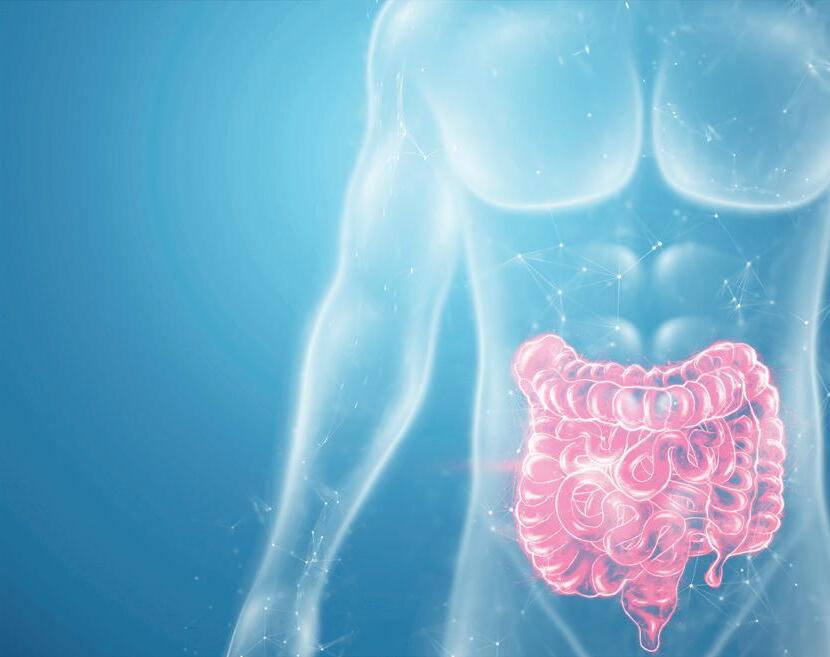
49 CENTRAL RESEARCH

What is the impact of diet on
periodontal disease?
A healthy diet requires the consumption of different foods that provide nutrients to maintain systemic and periodontal health. Nutrients, in turn, are divided into: macronutrients, organic compounds needed in large quantities (carbohydrates, proteins, fats) that add energy and are involved in the growth and repair of tissues; and micronutrients, which are essential elements required in small quantities for the optimal performance of physiological, metabolic and protective functions (vitamins and minerals).
Within the group of periodontal diseases is periodontitis, which is a chronic inflammatory disease that destroys the structures that keep the tooth fixed (periodontium), which can lead to dental loss. The main signs of periodontal disease are: bleeding and purplish or reddish color of the gums, bad odor or taste in the mouth, and presence of white-yellowish mass (dental plaque) and/or dental calculus. In severe states there is pain, interdental black spaces, changes in the position and mobility of the teeth, making chewing, speech, health and aesthetics of the patient difficult.
Nutrition and periodontitis have a bidirectional relationship where an inadequate diet is considered a modifiable risk factor, and the adequate intake of macro and micronutrients is able to modulate the pro- and anti-inflammatory cascades, directly influencing the disease. Some of the main functions of macro and micronutrients on periodontitis are described below.
Carbohydrates: they are essential for the proper functioning of our body, providing energy to all types of cells. There are different types of carbohydrates in the diet, some of which have positive effects on the periodontium, such as complex carbohydrates with fiber contained in whole grains, fruits, and legumes. On the other hand, refined complex carbohydrates and simple carbohydrates such as flour and sugars added to products show negative effects. Common table sugar (sucrose) is considered to be one of the main triggers for the formation of the yellowishwhite mastic that forms around the teeth, which is considered key in the onset and progression of the disease.

51
CENTRAL RESEARCH
Lipids: they are the main source of energy reserves in the body. Some of their functions are to regulate body temperature, send signals to the cells to fulfill their functions, modulate inflammation, etc. Their excessive consumption has been related to a greater destruction of the alveolar bone and an increase in inflammation, especially saturated fats and cholesterol, which are mainly found in butter or animal products. In contrast, monounsaturated and polyunsaturated fats, also known as healthy fats such as omega-3 (O-3) and omega-6 (O-6), can have positive effects on the periodontium, such as modifying the course of the disease by playing an antiinflammatory role and decreasing the signs of disease in conjunction with periodontal therapy.
Proteins: are indispensable in the human diet, essential for the growth and repair of tissues. In the gum, proteins are important to maintain
the integrity of the tissue; in severe protein deficiencies, there is a greater risk of losing teeth.
Vitamin D: it is found in foods such as mushrooms, tuna, dairy products, etc. This vitamin has an anti-inflammatory effect on the mouth. In conjunction with periodontal treatment, it has a positive impact by eliminating the bacteria that initiate this disease, in addition to reducing gum bleeding. Inadequate intake of this nutrient reduces healing after oral surgery.
Vitamin C: an important source of vitamin C is citrus fruits. It is essential for the proper function of the immune system and oral health, improves healing in the oral cavity, and reduces inflammation and bleeding of the gums.

Calcium: it is found in fish, dairy products and by-products, etc. It is one of the main minerals
necessary for tooth formation. Supplementation in conjunction with periodontal treatment improves the successful results of the therapy. It has been documented that the higher the calcium intake in the diet, the lower the risk of developing periodontal disease, and, on the contrary, a lower calcium intake is related to greater alveolar bone loss.
52
CENTRAL RESEARCH
Myths about the impact of diet on periodontal disease

Does having a poor diet affect my gum health?
Yes, over- or under-consumption of some nutrients hurts the health of the oral cavity and gums, increasing inflammation and signs of periodontal disease.
Are carbohydrates bad for my oral health?
Yes and no. Carbohydrates are the main source of energy used by our body however, excessive consumption of added sugars in food or beverages is considered the main formator
of the yellowish-white mass around the tooth. On the contrary, other carbohydrates, such as whole grains without added sugar or natural fruit, promote oral and periodontal health.
Can vitamin supplementation be a treatment for periodontitis?

No. Vitamin supplementation is used as an adjuvant treatment and improves results in conjunction with periodontal treatment. In addition, vitamin supplementation should be supervised by a nutritionist.
If I eat a lot of fats, am I more likely to develop periodontitis?
Yes. Excessive consumption of this macronutrient causes an imbalance in the body called oxidative stress, which directly damages the body’s cells and tissues, leading to periodontal disease. However, there are fats that, if consumed in moderation, control inflammation, for example, olive oil, avocado, and seeds.
53
CENTRAL
RESEARCH
Are all fats bad for the health of my gums?
No. There are fats with anti-inflammatory properties, such as polyunsaturated fats, among the best-known O-6 and O-3 (in the right proportion, a maximum ratio of 5:1), or monounsaturated fats, which can modify the structure of the cells of the periodontium preventing damage from oxidative stress and reducing inflammation in the body.
References
1. O’Connor, J. P., Milledge, K. L., O’Leary, F., Cumming, R., Eberhard, J., & Hirani, V. (2020). Poor dietary intake of nutrients and food groups are associated with increased risk of periodontal disease among community-dwelling older adults: a systematic literature review. Nutritionreviews,78(2), 175–188. https://doi.org/10.1093/nutrit/nuz035
2. Najeeb, S., Zafar, M. S., Khurshid, Z., Zohaib, S., & Almas, K. (2016). The Role of Nutrition in Periodontal Health: An Update. Nutrients,8(9), 530. https://doi.org/10.3390/nu8090530
3. Kaur, G., Kathariya, R., Bansal, S., Singh, A., & Shahakar, D. (2016). Dietary antioxidants and their indispensable role in periodontal health. Journaloffoodanddruganalysis,24(2), 239–246. https:// doi.org/10.1016/j.jfda.2015.11.003
4. Gondivkar, S. M., Gadbail, A. R., Gondivkar, R. S., Sarode, S. C., Sarode, G. S., Patil, S., & Awan, K. H. (2019). Nutrition and oral health. Disease-a-month.DM,65(6), 147–154. https://doi.org/10.1016/j. disamonth.2018.09.009
5. Lee, K., & Kim, J. (2019). Dairy Food Consumption is Inversely Associated with the Prevalence of Periodontal Disease in Korean Adults. Nutrients,11(5), 1035. https://doi.org/10.3390/nu11051035
6. Varela-López, A., Quiles, J. L., Cordero, M., Giampieri, F., & Bullón, P. (2015). Oxidative Stress and Dietary Fat Type in Relation to Periodontal Disease. Antioxidants(Basel,Switzerland),4(2), 322–344. https://doi.org/10.3390/antiox4020322
7. Martinon, P., Fraticelli, L., Giboreau, A., Dussart, C., Bourgeois, D., & Carrouel, F. (2021). Nutrition as a Key Modifiable Factor for Periodontitis and Main Chronic Diseases. Journalofclinicalmedicine, 10(2), 197. https://doi.org/10.3390/jcm10020197
Alondra Del Carmen Ruiz GutiErrez, PhD
Lucrecia Susana CarreraQuintanar, PhD

PhD in Translational Nutrition Sciences. CUCS, UdeG. Member of the National System of Researchers level I.
Fabiola MarquezSandoval, PhD
Coordinator of the PhD in Translational Nutrition Sciences. CUCS, UdeG. Member of the National System of Researchers, level I.




Professor of the Postgraduate Program in Periodontics, CUCS, UdeG. Member of the National System of Researchers Candidate level.
Nydia YazmIn SAnchez Orozco, PhD student

Student in Translational Nutrition Sciences. CUCS, UdeG.
Maria J. Citlalli Perez Novoa, Bds
Bachelor of Dental Surgery, CUCS, UdeG.
54
CENTRAL RESEARCH
Stimulator to combat stress, anxiety, and sleep problems
Respiratory muscle trainer to slow lung aging

With only 4 minutes a day and through stimulation of the vagus nerve, this device promises to be an aid in the prevention and treatment of stress-related psychiatric disorders.
Pulsetto is a powerful device for home use launched to activate the parasympathetic nervous system safely and without leaving home. Scientific evidence shows that vagus nerve stimulation has positive effects in the prevention and treatment of stress-related psychiatric disorders. The Pulsetto stimulator uses neuromodelingbased technology to slow the heart rate, reduce stress responses, and instill calm throughout the body.
Courtesy: pulsetto.tech
OPUMP is the first intelligent breathing training device that aims to develop, improve, and maintain lung health through breathing exercises. This device helps people suffering from COPD, asthma, and other chronic respiratory diseases, as well as those who want to strengthen their respiratory muscles to delay natural aging. It includes training programs and measurement of respiratory strength, vital capacity, and anaerobic threshold.
OPUMP syncs to your smartphone to provide realtime guidance and tracking, it can also create beautiful songs from your breath.

Courtesy: opump.com
U-Scan, the new miniature laboratory
In the form of a 90mm diameter round pill, U-Scan is a cartridge-based urine analysis device capable of detecting, measuring, and tracking multiple parameters found in urine.
By placing it in your toilet, U-Scan offers a status of body balance by monitoring and detecting potential diseases or medical conditions thanks to its more than 3,000 biomarkers. The device has the particularity of differentiating different types of urine from different people in the same family and even differentiating urine from other liquids. The company Withings expects to offer it to the market at a price of 499.95 euros in the second half of 2023.
Courtesy: withings.com

55
GADGETS
Developed in collaboration with Philips advanced technologies, Nowatch is the latest advancement in biotechnology focused on mental well-being.

Inlaid with gemstones instead of a display, Nowatch is a science-backed, technology-based holistic wellness device. Through its multisensors, it analyzes the activity of the sudoriferous glands and measures stress levels, as well as capturing biological data such as respiratory rate, heart rate, temperature, skin conductance, body movement, and oxygen in the blood. The whole device, the application, and the membership cost 427 euros. It has been on the market since mid2023. Courtesy: Nowatch.com
Goodbye to post-workout pain
FDA-approved for muscle recovery and pain relief; Lumaflex Body Pro is the new wearable red light therapy device that promises to unlock peak athletic performance. The therapy relies on sending low-level wavelengths of red or near-infrared light through the skin to stimulate cell function. With just 10 minutes of use per day, Lumaflex Body Pro boosts physical performance, relieves chronic joint pain, and accelerates post-workout recovery. In addition, among its benefits are the production of collagen, better circulation, reduction of inflammation, and cell regeneration. Its price is $ 689. Courtesy: Lumaflex.com
Apple Vision Pro glasses, the new era of spatial computing


Apple’s first space operating system is about to hit the market and promises to be the most advanced augmented reality and virtual reality device ever made for consumption.
Without a mouse, keyboard, or touch screen, the glasses allow you to navigate and interact just by looking at the images transmitted to two micro-OLED screens with more than 23 million pixels for maximum resolution. To control the glasses, the device uses eye tracking, hand gestures, and voice recognition. Apple Vision glasses and its operating system, VisionOS, allow you to capture spatial images and videos in 3D and then relive the moment in an immersive way, generating the feeling of living in an alternative reality wherever you look. They will cost $3,499 and will be available in early 2024 only in the U.S. Courtesy: Apple Vision Pro
Nowatch, the watch without a screen that does not mark the time
56 GADGETS
Gary Jheferson Salazar Rondon,

M.Sc.
Pharmacist with an MSc Clinical Pharmacology and MSc Biomedicine and Biochemistry. Professional with over 7 years of successful experience in Quality assurance, Regulatory affairs and pharmacovigilance in Europe, Latin America, Asia, and Africa. Regulatory Affairs Specialist ROW at Sintetica; Senior Technical Regulatory Affairs Project Manager at Idorsia Pharmaceuticals, Switzerland.

Aspartame: its classification as a possible carcinogen and its impact on the industry
Aspartame is an artificial sweetener that has been used in the food industry for decades. Its sweetness is 200 times that of sugar, making it a popular additive in low-calorie beverages and foods.
However, in recent years a debate has been generated around the possible classification of aspartame as a carcinogen due to scientific studies suggesting a relationship between aspartame consumption and the development of cancer. This article discusses the history of aspartame, previous studies on its relationship with cancer, reactions of the food industry, regulatory implications, impact on industry, communication and public perception, and classification as a possible carcinogen.
Aspartame was discovered in 1965 by James M. Schlatter, a chemist who worked at the pharmaceutical company G.D. Searle & Company. Schlatter was searching for new drugs to treat ulcers when he accidentally synthesized aspartame by mixing two amino acids, phenylalanine and aspartic acid. Upon tasting his substance, Schlatter realized that it was exceptionally sweet.
After its discovery, G.D. Searle & Company began studies to demonstrate the safety of aspartame as a food additive. In 1974, the U.S. Food and Drug Administration (FDA) approved aspartame as a sweetener in low-calorie foods and beverages. Since then, aspartame has been used in more than 90 countries and in more than 6,000 products.

57
CENTRAL
RESEARCH
Since the 1970s, numerous studies have been conducted to evaluate the safety of aspartame and its relationship to cancer. Some studies have suggested a possible connection between aspartame consumption and an increased risk of developing brain tumors, leukemia and lymphoma. However, other studies have found no evidence of such a relationship.
Companies and organizations in the food industry have closely followed the research on aspartame and cancer. Many companies have defended the safety of aspartame, citing studies that have found no link between the sweetener and cancer. In addition, they have argued that regulatory agencies around the world, such as the FDA and the European Food Safety Authority (EFSA), have thoroughly reviewed the scientific evidence and concluded that aspartame is safe for human consumption. However, some companies have chosen to remove aspartame from their products in response to consumer concerns about its safety. These companies have sought alternatives, such as stevia and erythritol, to replace aspartame in their products.
The classification of aspartame as a possible carcinogen could have a significant impact on regulations and policies in different countries and
regions. If a link between aspartame and cancer is confirmed, regulatory agencies could reconsider approval of the sweetener and set stricter limits for its use in foods and beverages. In addition, they could require warnings on the labels of products containing aspartame, similar to the warnings that appear on tobacco-containing products.
However, the regulatory implications will largely depend on the quality and strength of the scientific evidence supporting the classification of aspartame as a carcinogen. Therefore, it is crucial that further research be conducted to determine whether there is a causal relationship between aspartame and cancer.

Classification of aspartame as a possible carcinogen could have a major impact on the production and sale of products containing the sweetener. Manufacturers could face a decline in demand for products containing aspartame, which could lead to a decrease in sales and the need to reformulate products to eliminate or replace it. In addition, the classification could prompt companies to look for alternatives to aspartame, which could generate new developments in the field of artificial sweeteners. However, these new sweeteners would also come under scrutiny in terms of safety and long-term health effects.
Current events and classification as a possible carcinogen by IARC
The International Agency for Research on Cancer (IARC), the cancer research unit of the WHO, labeled aspartame as a potential carcinogen as of July 2023. This decision is based on a recent French study reporting an increased risk of cancer associated with aspartame consumption. The IARC ruling aims to assess whether something is a potential hazard or not, based on all the published evidence. The WHO label indicates that there is limited evidence linking aspartame to cancer, and that it is the lowest of three categories.
The Joint FAO/WHO Expert Committee on Food Additives (JECFA) will update its risk assessment exercise on aspartame, including the revision of the acceptable daily intake and dietary exposure assessment for aspartame. The inclusion of aspartame
58
CENTRAL RESEARCH
as a possible carcinogen is intended to motivate further research, which will help agencies, consumers and manufacturers draw their own conclusions about its safety.
Conclusions
The classification of aspartame as a possible carcinogen could influence public perception and risk communication by health authorities and the food industry. Consumer concerns about the safety of
aspartame are likely to increase, which could lead to a decline in the consumption of products containing the sweetener.
Health authorities and the food industry will have a responsibility to clearly communicate the risks associated with aspartame and provide accurate, evidence-based information to consumers. Transparency and education will be key to maintaining public confidence and ensuring that consumers can make informed decisions about their diet and product choices.

59
CENTRAL RESEARCH
Dr. Ana Villaseñor-Todd

Liver cirrhosis and minimal hepatic encephalopathy, their impact on quality of life and the role of molecular biology
Throughout history, liver diseases have been a major health problem and their consequences are significantly reflected in human behavior.
In ancient Mesopotamia (2000 BC) powers of augury and divinity were attributed to the liver, then it was called “soul” or “humor”. In traditional Chinese medicine (Neiching, 1000 BC), the liver was considered a storehouse of blood containing the soul. Hippocrates described a patient with hepatitis as one who “barked like a dog and could not say things that could be understood.” For his part, William Shakespeare exposes the behavior of an alcoholic gentleman with chronic dementia and protein intolerance. Sir Andrew Aguecheek, star of the comedy Twelfth Night, is considered one of the most modern descriptions of hepatic encephalopathy of the last 400 years. It is described by Dr. William Summerskill in the journals The Lancet and Gut as Aguecheek’s disease. Thus, the relationship between the liver and brain function has been described throughout history.
Liver disease can occur for different reasons: viral infections (hepatitis B and hepatitis C), alcohol intake or fat accumulation in non-alcoholic fatty liver disease. Recently, the spectrum of liver damage in COVID-19 has been described, ranging from direct SARS-CoV-2 infection, indirect involvement by systemic inflammation, hypoxic changes, iatrogenic causes (adverse drug reactions), and ventilation, to exacerbation of underlying liver disease.(1)
Every year 2 million people around the world die from liver disease. In addition, it represents a high burden of disability and increased use of health resources; 3.5% of deaths worldwide are due to liver diseases(2).
In Mexico, liver cirrhosis is the third most common cause of mortality in men and the seventh in women. As chronic liver disease progresses, patients develop complications of hepatocellular dysfunction and portal hypertension that contribute to liver-related morbidity and mortality. Hepatic encephalopathy is a common complication in chronic liver disease.
60
Scientist, doctor by profession and Mexican businesswoman noted for her studies in minimal hepatic encephalopathy, oxidative stress, quality of life and social cognition. Certified by the Pan American Health Organization (PAHO) as a facilitator of MhGap; CEO VICOMMA Group.
Technical Committee: Rosa del Carmen Lopez-Sanchez, Bernardo Ng, Jose Asencion HernandezHernandez, Xochitl Duque-Alarcon, Carlos Alejandro Cortes-Hernandez
SCIENCE TODAY
Hepatic encephalopathy (HE)
It is a spectrum of potentially reversible neurological and psychiatric disorders whose clinical manifestations can range from subclinical alteration of mental status to coma. Encephalopathy has been classified based on clinical response, with the West Haven criteria, identifying four levels. The latest consensus of the ISHEN (International Society for Hepatic Encephalopathy and Nitrogen
Metabolism) classifies HE into two large groups: the minimum HE and the overt HE. In practical terms, HE can be classified as covert HE, which is one comprising minimum HE and West Haven grade I (see Table 1). Overt EH is characterized by being clinically evident without the need for psychometric or neuropsychological testing and comprises grades II to IV of the West Haven classification. In recent years, level one was subdivided based on a model that exposes the need for early detection of the stage of the disease(3).

61
SCIENCE TODAY
The West Haven classification. The SONIC model, described by Dr. J. Bajaj, describes neurocognitive impairment as a natural part of chronic liver disease from its normal stage to coma.
Minimal hepatic encephalopathy (MHE)
Also called subclinical hepatic encephalopathy, it represents the earliest and mildest form of hepatic encephalopathy (HE). It refers to a condition defined by the existence of a series of neurophysiological and psychiatric alterations. Minimal hepatic encephalopathy can affect up to 80% of patients with liver cirrhosis. It is characterized by the deterioration of cognitive function, mainly in the domains of attention, memory, speed of response, vigilance, and integrative function. Patients with MHE have reduced performance in daily activities, so they have a shorter productive life.
In 1950, monomorphic slow waves were observed for the first time in the frontal regions of the electroencephalograms of patients with MHE(3). Although there is currently no gold standard for its diagnosis, today we have useful and easy-to-apply diagnostic tools, such as Stroop EncephalApp, which is a digitized version of the original Stroop test used to assess resistance to mental stress.
It was recently introduced as a tool for the diagnosis of MHE, however, it is necessary to validate these tests in our population(4).
Neuropsychiatric aspects in minimal hepatic encephalopathy
The effects on cognition define EH as a neuropsychological syndrome with an impact on cognitive, affective, and motor functions observed to a greater extent in executive processes, especially attention. This is associated with a multitude of negative effects on the individual’s health-related quality of life, from sleep disturbances, gait disturbances with increased risk of falls, and the ability to drive vehicles.
On the other hand, a prevalence of up to 45% of depression and anxious symptoms associated with this condition is also described. Recently, and through the approach of brain function as an organization in networks, it is observed that in the MHE brain functioning is altered in regions linked to cognitive processes whose alteration is observed in the clinic.

62
SCIENCE TODAY
Expectations of early diagnosis by metabolic markers
Normal brain function depends in several ways on the normal functioning of the liver. Although the brain is protected from neurotoxic substances by the blood-brain barrier (characteristic of blood vessels in the brain that prevents the passage of many compounds from the blood into brain tissue), some neurotoxins can penetrate this barrier after injury to the liver such as cirrhosis. This liver disease induces an increase in neurotoxic substances such as ammonium and manganese, which in turn induce oxidative stress by crossing the blood-brain barrier, causing damage to neurotransmission, failure in energy synthesis and finally cell death (represented schematically in Figure 2).
Molecular diagnostics
Hepatic encephalopathy is linked to molecular alterations resulting from liver damage. One of the most common is the decrease in the formation of urea, with the consequent elevation of ammonium levels in the blood. Ammonium turns out to be very toxic to the brain and among other things causes an increase in water in the tissue (edema) (see Fig. 1).

Detecting damage at an early stage is undoubtedly a great challenge. The liver works by containing or transforming molecules into an organ that detoxifies, turning the most harmful into less harmful ones. Thus, when the intestine produces ammonium, the liver transforms it into urea, or when we eat fats or excess amino acids, our liver transforms them into energy; however, as our liver receives more and more work and more toxic, it is damaged and obviously no longer does its job so efficiently. This increases blood molecules that reach the brain.
Conclusions
Investment and innovation are vital to maintain adequate surveillance of chronic liver disease and
Hepatic encephalopathy. Neurodegeneration as a natural part of chronic liver disease.
its complications, mainly those related to neurodegeneration. Funding for liver disease, liver cancer, viral hepatitis, organ transplantation, obesity, and alcohol consumption is projected to decline in health systems, which may hamper these efforts. Continued attempts to track the burden of liver disease will help identify priorities for clinical care. Liver cirrhosis and its complications represent an important burden in the country, the timely diagnosis of each of these complications and specifically of minimal hepatic encephalopathy is fundamental since it directly impacts the quality of life of patients. Improving screening tests should be a priority in the coming years.
References
1. Nardo, A. D., Schneeweiss-Gleixner, M., Bakail, M., Dixon, E. D., Lax, S. F., & Trauner, M. (2021). Pathophysiological mechanisms of liver injury in COVID-19. Liver international: Official JournaloftheInternationalAssociationfortheStudyoftheLiver,41(1), 20–32. https://doi.org/10.1111/ liv.14730
2. Moon, A. M., Singal, A. G., & Tapper, E. B. (2020). Contemporary Epidemiology of Chronic Liver Disease and Cirrhosis. Clinical gastroenterology and hepatology : Theofficialclinical practice journal of the American Gastroenterological Association, 18(12), 2650–2666. https://doi. org/10.1016/j.cgh.2019.07.060
3. Karanfilian, B. V., Park, T., Senatore, F., & Rustgi, V. K. (2020). Minimal Hepatic Encephalopathy. Clinicsinliverdisease,24(2), 209–218. https://doi.org/10.1016/j.cld.2020.01.012
63 SCIENCE TODAY
Monosodium glutamate - flavor enhancer or disease enhancer?
Taste has always been one of the most important reasons for food consumption. Humans have receptors located on the tongue that allow us to identify tastes such as salty, sweet, bitter, sour, and umami. The latter is described as “meaty” or “protein” taste. Once food with this taste is ingested, the umami receptor transmits a signal to the central nervous system (CNS) that protein has been consumed and, like the sweet taste, generates a feeling of well-being in the organism.
Currently, as a consequence of lifestyle, people spend little time preparing their meals and rely mainly on processed and fast foods that often have poor nutritional value. Thus, the intake of such foods has increased notably, becoming increasingly attractive thanks to the additives used to maintain their flavor and texture and to expand their shelf life. Among these, monosodium glutamate (MSG) stands out. This additive is found in fast food and even in home-prepared foods such as creams, soups, cheeses, frozen food, among others. It produces a flavor that cannot be found in other foods. Its effect is similar to that of umami, and through binding to its receptors, it is capable of increasing the natural flavor of foods by 6 to 8 times. Therefore, it is not surprising that it favors the attraction and search for foods containing it(1).
Ingestion of MSG alters the sensation of satiety (feeling full) by decreasing the function of the hormone leptin, that is to say, appetite reduction does not occur. In the long term, the consumption of foods rich in MSG may promote energy imbalance and contribute to the development of overweight or obesity. On the other hand, the consumption of MSG increases the production of cytokines (proteins that regulate the immune system), generating a state of chronic inflammation.
This, in turn, leads to alterations in the function of pancreatic beta cells (responsible for insulin production) and, therefore, favors what is known as glucose intolerance (higher than normal elevation of blood sugar after eating). These processes contribute to the development of obesity and type 2 diabetes(2;3). At the brain
level, MSG has been associated with an increase in the concentration of free radicals (compounds that produce oxidation) and their negative effects such as the loss of the integrity and function of neurons, thus increasing the risk of developing memory disorders, anxiety episodes, and other neurological diseases(2).

The regular consumption of processed foods is a global public health problem. To counteract this, it is necessary to improve nutritional knowledge and empower the population regarding their food choices, as well as to promote the preferential consumption of those foods without processing and, in the case of Mexico, with the least amount of warning labels.
Authors
MSP. Miguel Amaury Salas-Garcia. Physician, Master in Public Health and PhD student in Translational Nutrition Sciences at the University of Guadalajara.
BDN. Valeria Buenrostro-Velasco. Intern of Social Service of the Bachelor’s Degree in Nutrition of the UdeG.
Dr. Maria Fernanda Bernal-Orozco. Bachelor’s Degree in Nutrition, Master’s Degree and PhD in Public Health Sciences. Member of the National System of Researchers level I, PRODEP Profile, Research Professor of the UdeG.
Dr. Lucrecia Susana Carrera-Quintanar. Degree in Nutrition, PhD in Biological Sciences, Member of the National System of Researchers level I, PRODEP Profile, Research Professor of the UdeG.
Dr. Barbara Vizmanos. Physician, Dr. in Medicine. Member of the National System of Researchers level III, PRODEP Profile, Research Professor of the UdeG.
References
1. Mukherjee, I., Biswas, S., Singh, S., Talukdar, J., Alqahtani, M. S., Abbas, M., Nag, T. C., Mridha, A. R., Gupta, S., Sharma, J. B., Kumari, S., Dhar, R., & Karmakar, S. (2023). Monosodium Glutamate Perturbs Human Trophoblast Invasion and Differentiation through a Reactive Oxygen Species-Mediated Pathway: An In-Vitro Assessment. Antioxidants(Basel,Switzerland),12(3), 634.
2. Banerjee A, Mukherjee S, Maji BK. (2021). Worldwide flavor enhancer monosodium glutamate combined with high lipid diet provokes metabolic alterations and systemic anomalies: An overview. Vol. 8, ToxicologyReports.ElsevierInc.,p. 938–61.
3. Bera, Tushar & Sk, Kar & Yadav, Parmeshwar & P, Mukherjee & Yadav, Shankar & Joshi, Bishal. (2017). Effects of monosodium glutamate (MSG) on human health: a systematic review. WorldJournalofPharmaceuticalSciences.5.139-144.
64 CENTRAL RESEARCH


65
 Blanca M. Peredo VAzquez
Blanca M. Peredo VAzquez

Nutritional legacy; Thomas Colin Campbell

Thomas Colin Campbell was born on a dairy farm in Virginia, United States, on March 14, 1934. From a loving family and a cheerful childhood, Campbell was the first to attend college. In 1956 he obtained his degree in Pre veterinary Medicine from Penn State University, where thanks to the help and interest of Professor Clive McCay (recognized for his research on nutrition and aging) he got a scholarship to study the Master’s degree in Nutrition and Biochemistry at Cornell University, his love for science led him to finish his doctorate in Nutrition in 1962.
Thereafter, his career only grew; in 1963 he became a research associate at MIT, where he focused on studying dioxin, later identified as Agent Orange, a pollutant used in Vietnam.
Focused on education, science, and nutrition, Campbell worked for the U.S. Department of State within a national network of feeding centers in the Philippines to help malnourished children. This work led him to serve on a Nutrition Select Committee in the U.S. Senate, which would help him realize one of his greatest achievements:
TheChinaStudy
In the early 1980s, Campbell directed a laboratory focusing his studies on the effects of nutrition and its relationship to liver cancer, which would be joined for a brief time by Dr. Chen Junshi, from China who was working in Albany, New York, who was particularly interested in the role of selenium in hepatocarcinogenesis. Dr. Chen conducted studies on the effect of selenium on human nutrition, which is now known as the final chapter of the essential nutrient study, as no new essential nutrients have been discovered since this study was published in late 1979.
67
Clinical Trial Assistant at Drox Health Science
in Biological
PEOPLE IN SCIENCE
Engineer
systems
Shortly after his return to China, Dr. Chen Junshi became Deputy Director of the Institute of Nutrition and Food Hygiene in Beijing, and soon after collaborative talks were formed with Dr. Campbell. In China, cancer was a growing problem, speculated that it could be due to environmental and dietary patterns. Li Junyoa, an epidemiologist at the Chinese Academy of Medical Sciences, conducted extensive studies with impressive sociodemographic results about the presence of cancer in rural areas and large cities in the Asian country. In the U.S., the pattern was very similar, prompting Chen and Campbell to propose a study on factors related to nutrition and cancer, as well as their relationship to other diseases.
The study was so peculiar that they got funding from several cancer institutes in the US. In the U.S. and England, however, most of the support for this study came from China’s government and its population.
For the study, 65 counties in rural China participa-ted, from each of them 2 villages and 50 families per village were randomly selected, of which 50% of men and 50% of women participated, with a total of 6,500 participants, who participated in the surveys and measurements carried out between 1983 and 1990 about food. The lifestyle and diseases of the population.
In 1990 the first results of the study were
published and by 2005, Collin Camp-bell and Tomas Campbell published the book The China Study which ended up becoming a Best Seller, thanks to the fact that it analyzes the relationship between food, diseases, and health. Now this book is considered one of the most important on food and health.
Today, at 89, Campbell continues to work in the field of health and nutrition, publishing articles and enjoying himself with his wife and children and collaborates with other researchers through Cornell University and his non-profit organization, the T. Collin Campbell Center for Nutrition Studies.
References
1. De La Paz, J. (2021). ElestudiodeChina:unlibroesencialsobrenutrición ysalud.Vitamina Vegana. https://www.vitaminavegana.com/el-estudio-de-china/
2. T. Colin Campbell Center for Nutrition Studies. (2018, August 6). El Estudio de China - Centro de Estudios en Nutrición.

68
PEOPLE IN SCIENCE

69 CLIRTOON


Información








 Director of Research and Development at Drox Health Science. PhD in Biotechnology, Master in Biochemical Engineering. Member of the National System of Researchers level I.
Director of Research and Development at Drox Health Science. PhD in Biotechnology, Master in Biochemical Engineering. Member of the National System of Researchers level I.





















 Courtesy Alex Zhavoronkov, PhD and Midjourney Generative AI, image of two American and Chinese biomedical scientists shaking hands.
Courtesy Alex Zhavoronkov, PhD and Midjourney Generative AI, image of two American and Chinese biomedical scientists shaking hands.









 Wendy LOpez Romero, PhD Research and Development Analyst at Drox Health Science. PhD in Innovation in Medical and Pharmaceutical Biotechnology. Master in Molecular Biology.
Wendy LOpez Romero, PhD Research and Development Analyst at Drox Health Science. PhD in Innovation in Medical and Pharmaceutical Biotechnology. Master in Molecular Biology.



 PhD
PhD



















 Oscar Mata, PhD
Oscar Mata, PhD






































 Blanca M. Peredo VAzquez
Blanca M. Peredo VAzquez






